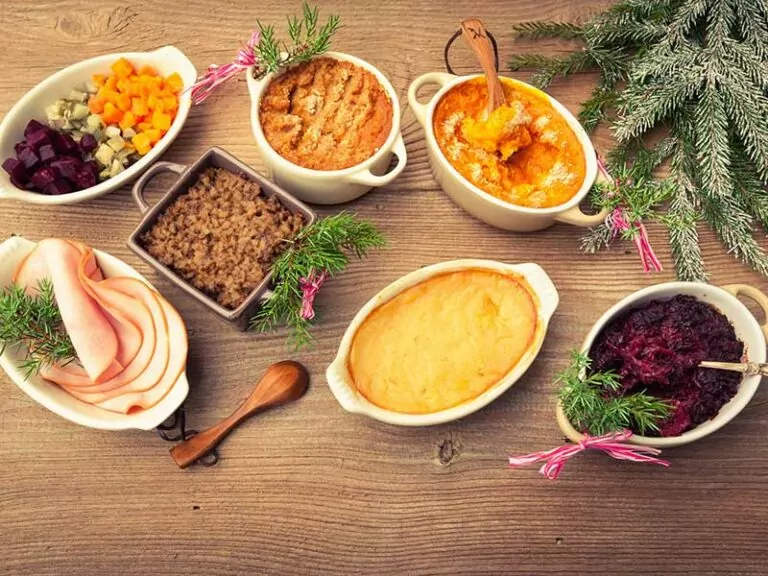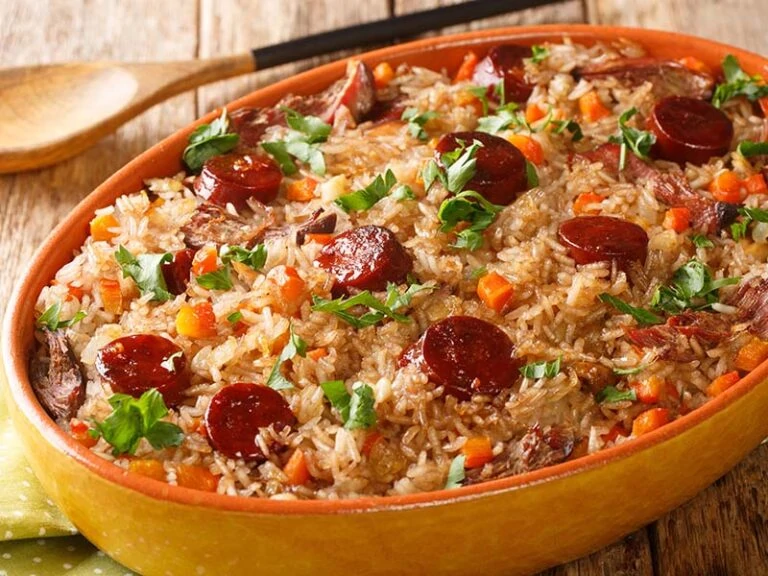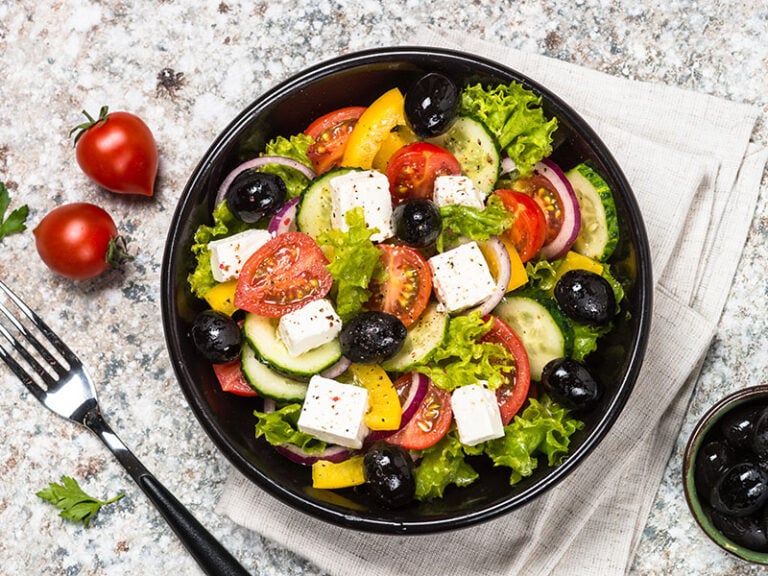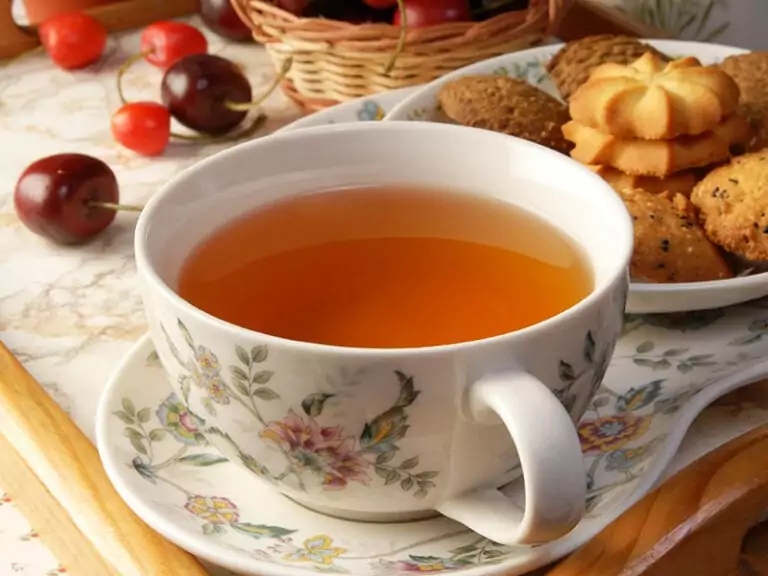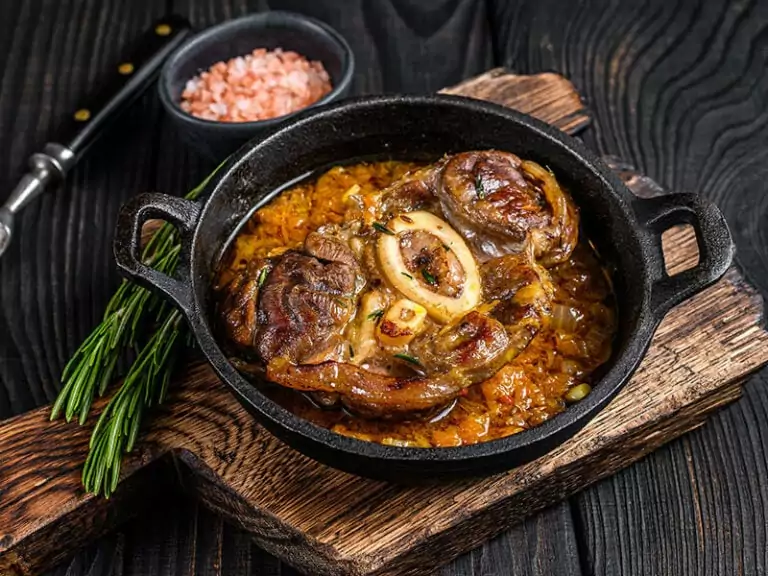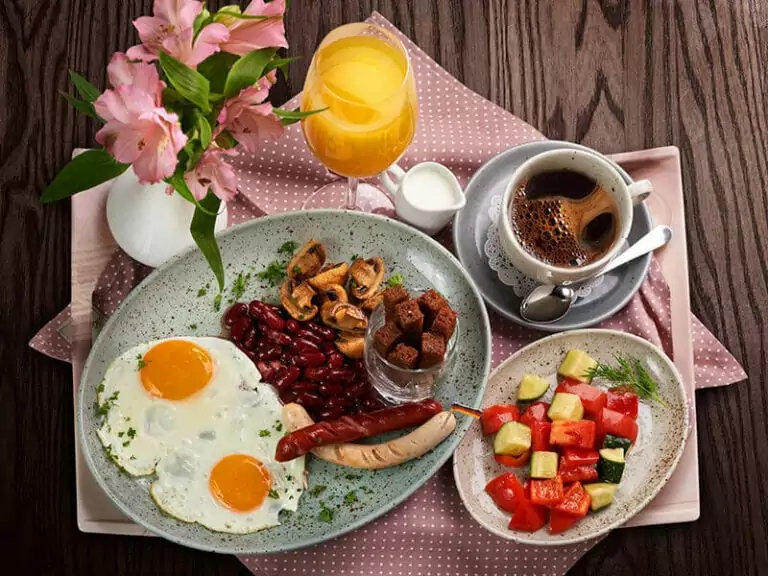Dive into the world of traditional Northern European dishes and let your taste buds embark on a flavorful adventure. In this article, I’ll take you on a delectable journey through Northern Europe’s rich and diverse cuisine.
Discover the secrets behind hearty stews, delicate pastries, and comforting flavors that have stood the test of time. Uncover new recipes, explore cultural traditions, and expand your culinary horizons. Sounds good? Let’s jump right in!
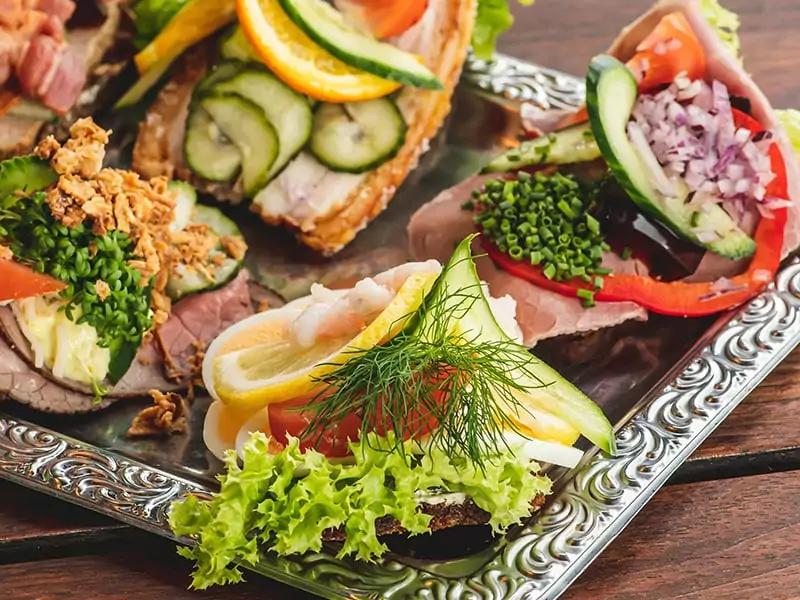
Understanding Northern European Cuisine: Baltic and Nordic Bounties
Baltic Cuisines
Estonian Cuisine
This cuisine represents a blend of centuries-old potato, meat, and fish-based dishes and recent influences from neighboring countries.
Key dishes include black rye bread, herring, and blood sausage. Soups, often served with a dollop of sour cream, also play an important role. A popular dessert across Europe is Kama, a mixture of finely milled barley, rye, oat, and pea flour mixed with buttermilk or yogurt.
Latvian Cuisine
The food culture of Latvia is deeply rooted in its agricultural heritage, with the prevalence of meat as a key component in most of its primary meal preparations. In addition, the Latvians take full advantage of the Baltic Sea and develop an array of seafood delicacies.
Smoked fish, particularly sprats, are a staple. Grey peas with bacon is another classic dish in Europe. Dark rye bread, often flavored with caraway seeds, accompanies most meals.
Lithuanian Cuisine
Lithuanian cuisine is hearty, filled with potatoes, rye, beets, greens, and mushrooms. A beloved national dish is Cepelinai, large potato dumplings filled with meat, cheese, or mushrooms. Dark rye bread and cold beet soup are other staples.
Livonian Cuisine
Although Livonian cuisine is not well-known due to the near-extinction of the Livonian people, its heritage has blended with Latvian and Estonian cuisines. Fish, bread, and locally grown vegetables are the mainstays.
Nordic Cuisines
Danish Cuisine
Denmark’s culinary scene has gained international recognition thanks to restaurants like Noma. Traditional dishes include Smørrebrød (open-faced sandwiches), Frikadeller (Danish meatballs), and pickled herring. Rye bread is common, and sweet pastries (Danish pastries) are also popular.
Finnish Cuisine
Finnish cuisine often features game meats, fish (particularly salmon and herring), and whole grains. Potatoes are a staple, but rye and oats are equally important, often used in breads and porridges. Mustamakkara, a black sausage, is a regional specialty in Tampere.
Icelandic Cuisine
Due to Iceland’s isolation, its cuisine revolves around seafood, lamb, and dairy. Traditional foods include fermented shark (Hákarl), dried fish (Hardfiskur), and a yogurt-like product called Skyr. In modern times, the use of local herbs and greens has increased.
Norwegian Cuisine
Norwegian food focuses on fish (like salmon and cod), potatoes, and other root vegetables. Dishes such as Lutefisk (lye fish), Rakfisk (fermented fish), and Klippfisk (dried and salted cod) are staple foods. Brown cheese (Brunost) is a unique Norwegian specialty.
Sami Cuisine
As the indigenous people of the Arctic region, the Sami diet is based on the resources available, including reindeer, fish, game, and berries. Bidos, a reindeer stew, is a familiar Sami dish. Cloudberries are often used in desserts and beverages.
Swedish Cuisine
Swedish cuisine is known for its herring, gravlax (cured salmon), and meatballs served with lingonberry jam. The smorgasbord, a buffet-style meal, is a Swedish dining custom. Sweden is also famous for its crispbread and sweet pastries, particularly cinnamon buns.
Swedish Delicacies
Blåbärssoppa (Blueberry Soup)
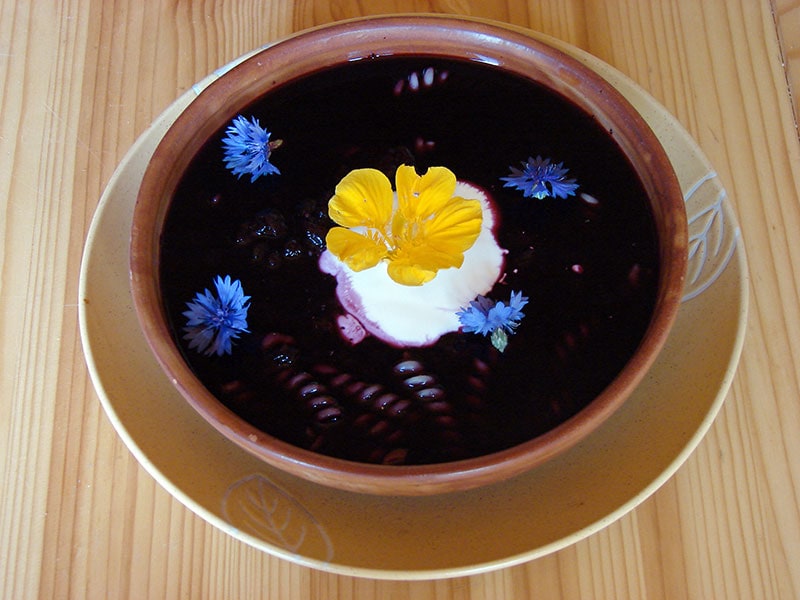
In the heart of Scandinavia, nestled within the Swedish culinary traditions, exists the Nordic delight of Blåbärssoppa, or Swedish blueberry soup. I was fascinated by the rich flavor of its main ingredient: bilberries, known as blåbär in Swedish, which translates to “blueberry”.
However, these berries are distinct from their North American counterparts. They’re unique, flourishing wildly in the European terrains, especially across Sweden. Blåbärssoppa, to my surprise, wasn’t just a drink or soup.
It was also an energizing porridge that showcased its versatility and warmth during the ski marathon Vasaloppet, where it’s traditionally served to the participants. The soup’s starch content gives it a comforting, thick consistency that can be enjoyed hot or cold.
While its sweet taste soothed my palate, I learned that it is also known to soothe upset stomachs and combat mild gastrointestinal ailments in Sweden and Finland. [1] In fact, across the pond in the US, it’s sold under the trade name Blåbär.
Kavring (Rye Bread)
I was lucky enough to relish the quintessential Swedish bread – Kavring. It might have originated as a crisp rye bread in Norway, but by the late 1800s, Kavring had evolved into a loaf in southern Sweden.
Its slightly sweet, tender, and fragrant nature brings a comforting touch to every meal. Constructed from plain flour, rye flour, salt, dark treacle syrup, baking powder, and a blend of fennel and caraway seeds, Kavring is more than just bread.
It’s originally paired with gravlax (cured salmon), pickled herring, Christmas ham, pickles, or hard-boiled eggs on occasions like Midsummer, Easter, or Christmas. What I admire most, though, is its versatility.
Kavring has transitioned from festive meals to everyday breakfast, now served with butter, cheese, or fruit jams. Its role in sandwiches only affirms its culinary adaptability.
Smulpaj (Crumble Pie)
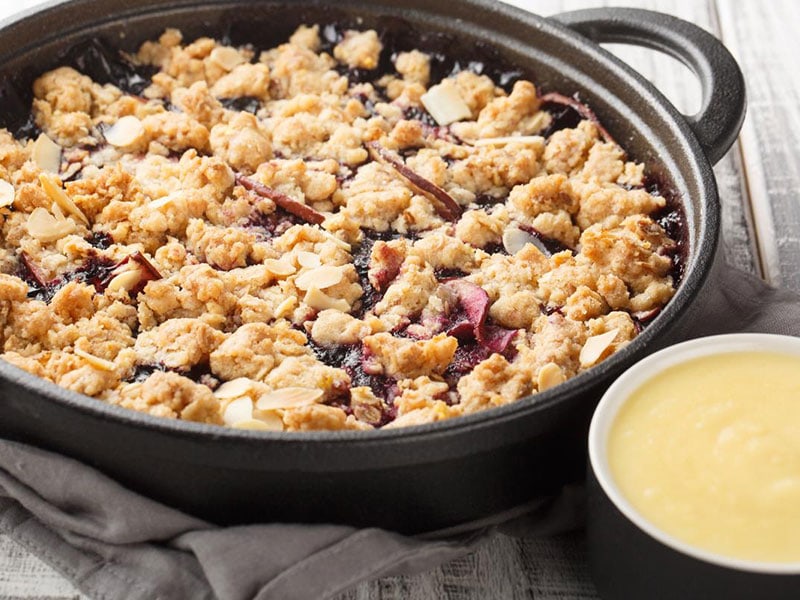
In Sweden, I stumbled upon a dessert that forever changed my perception of pie – Smulpaj. The name is a blend of ‘smula’ meaning crumb and ‘paj’ denoting pie.
True to its name, this crumble pie is an irresistible mixture of butter, sugar, wheat flour, and oatmeal, resulting in a beautiful crumbly texture. What makes Smulpaj uniquely delightful is the vibrant filling of diced fruits and berries.
On my first try, it was a beautiful medley of blueberries and raspberries flavored with sugar and cinnamon. Various fruits in Europe, such as rhubarb, strawberries, or apples, can also make an appearance, keeping things fresh and exciting.
Baked to a crisp and served warm, Smulpaj gets a final touch with toppings of whipped cream, vanilla custard, or ice cream. Its popularity has won it a prominent place in numerous Swedish cafes, making it a must-try.
Prinskorv (Small Sausage)
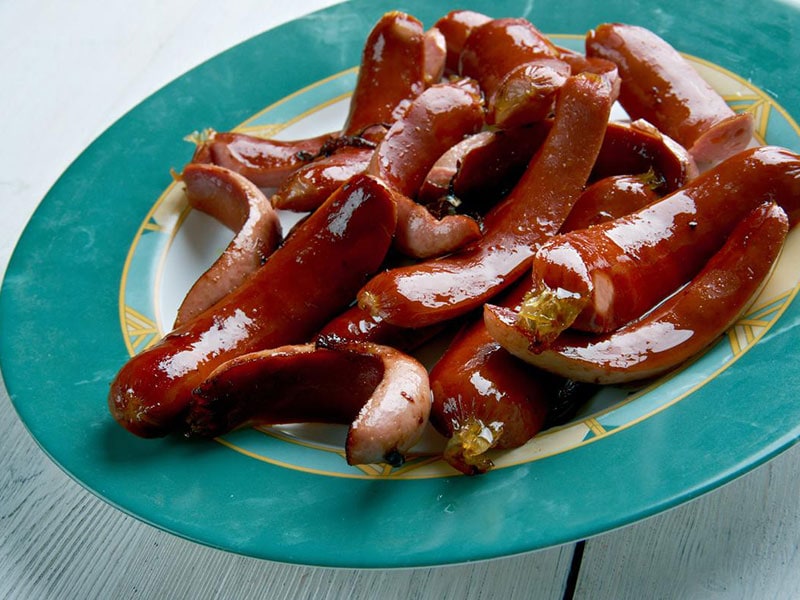
Prinskorv, or “prince sausage,” is proof of mouthwatering Sweden’s culinary culture. This short variant of Vienna sausage, concocted in 1805 by Viennese butcher Georg Lahner, is a blend of pork and veal, spiced just right and enclosed in delicate sheep casings.
Although it’s primarily a snack, Prinskorv comes to the fore during Christmas. A sizzling, pan-fried Prinskorv, paired with a tangy mustard dip, is a treasured component of the julbord – Sweden’s traditional Christmas buffet – and the festive smörgåsbord.
Amid the yuletide cheer, it sits harmoniously with dishes such as Janssons Frestelse (a potato gratin), meatballs, pickled herring, crackers, and salads.
But Christmas isn’t the only time it shines. Prinskorv is a Midsummer favorite in Sweden’s southern region, appearing at afternoon parties after the summer solstice.
Isterband (Lard Sausage)
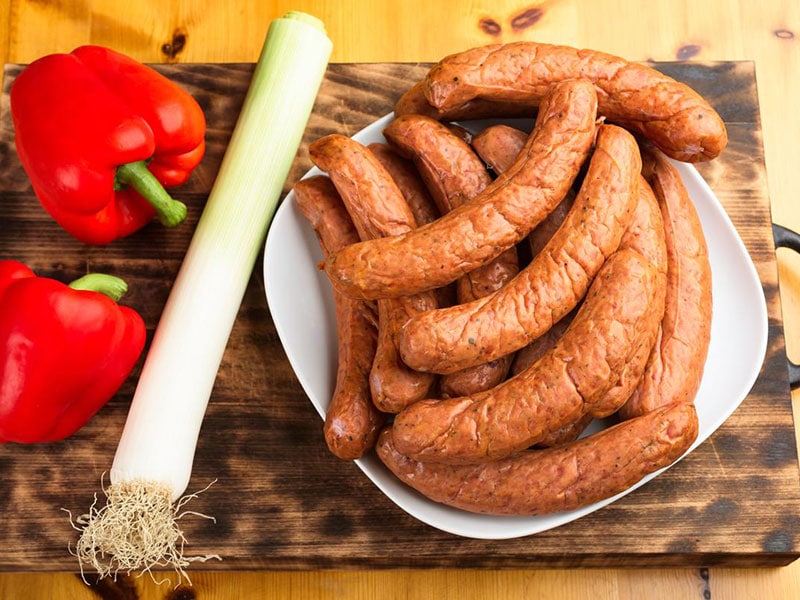
Isterband, often referred to as “lard sausage,” is a distinctive dish in the compelling culinary landscape of Swedish cuisine.
This sausage, lightly smoked and coarsely ground, boasts a flavorful mix of ground pork, barley groats, spices, and lard. Some variations may also include a touch of potato or onions, adding to this unique sausage’s rich and satisfying taste.
Its slightly sour flavor is unique, amplified when the sausage is pan-fried or oven-baked. One of my favorite ways to enjoy Isterband is with creamed dill potatoes and pickled beetroot.
Isterband isn’t a one-size-fits-all sausage in Sweden. You can find the Småländska Isterband hailing from the region of Småland, Syrliga Isterband, known for a slightly sour tang, or lättisterband for those counting calories.
Raggmunk (Potato Pancake)
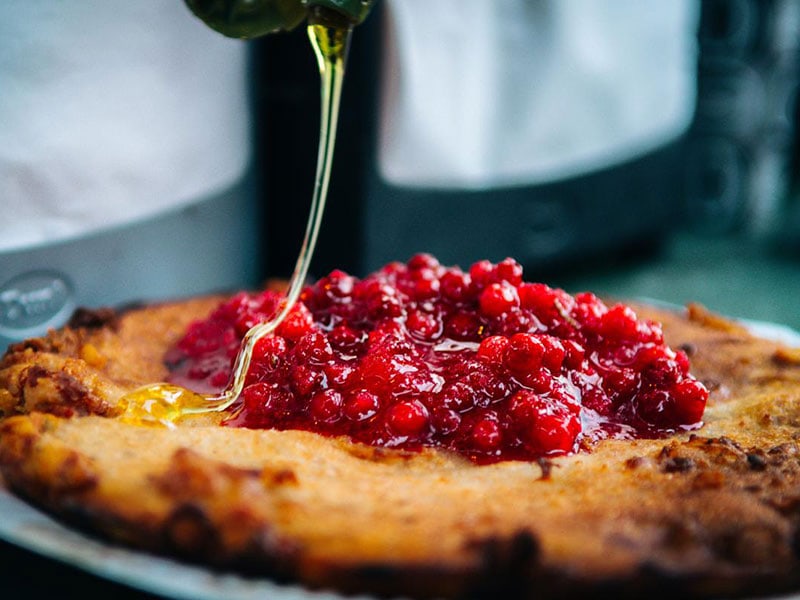
Raggmunk, or the classic Swedish potato pancake, is one delectable dish you need to try. It is made from simple ingredients, including milk, flour, salt, and grated potatoes.
Eggs can also sneak into the mix sometimes. Fried in butter over medium-high heat until golden, these pancakes deliver a wonderful, crispy texture. They’re originally served with salted pork belly, unsmoked fried bacon, and a dollop of lingonberry jam.
Raggmunk is a beloved comfort food, particularly in winter and Christmas, hailing as an established dish from the province of Östergötland in Sweden. It’s an international delight with similar dishes in England and Central and Eastern Europe!
Here’s a tip for those wanting to try making this dish at home: avoid new potatoes as they lack the needed starch.
Korv Stroganoff (Sausage Stroganoff)
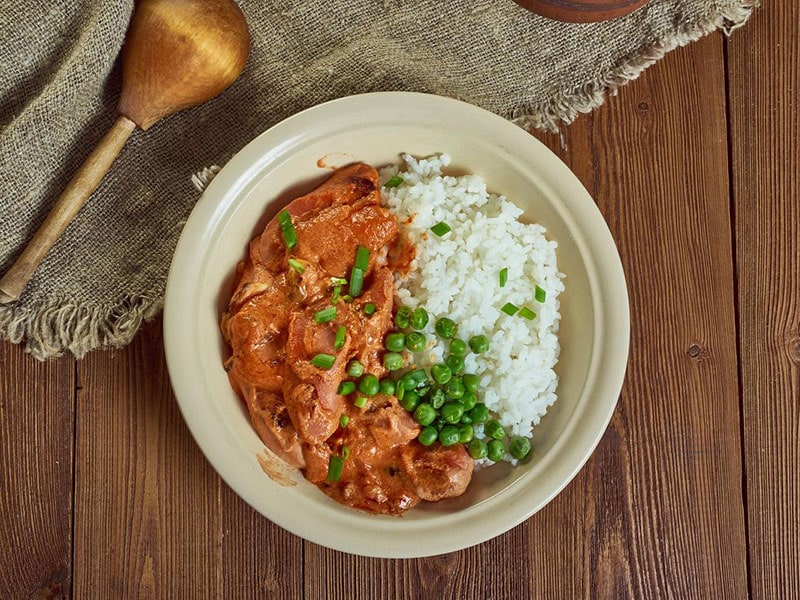
Korv Stroganoff, Sweden’s take on the classic beef Stroganoff, swaps beef for a distinctively Swedish sausage known as Falukorv. A tasty combo of pork, beef, potato starch, and a dash of spices, this sausage brings a unique flavor to the dish.
The recipe gets a punch of flavor from onions, tomato purée, chopped tomatoes, and French mustard. Then, everything is simmered together until well-seasoned and perfectly blended. The best part is that you’ll only need about 10 minutes to complete it.
The meal is only complete with rice or mashed potatoes as a side to soak up the delicious sauce. And if you’re in a rush, the “Gooh” brand in Swedish supermarkets offers a ready-made version.
Kåldolmar (Cabbage Rolls)
Kåldolmar, also known as Swedish cabbage rolls, trace their roots back to the mid-1600s when Swedish king Karl XII brought this delectable dish home from Turkey.
Unlike the Turkish version, which uses grape leaves, these cabbage rolls use blanched white cabbage leaves stuffed with a savory meat filling. The filling is a well-seasoned blend of boiled rice, breadcrumbs, minced pork or beef, milk, fried onions, and eggs.
Once stuffed and rolled, the cabbage rolls are drenched in beef stock and milk, then baked until tender. A rich sauce made from baking stock, cream, flour, and additional seasonings, is drizzled over the top for an extra layer of flavor.
The locals often serve Kåldolmar with boiled or mashed potatoes, lingonberry jam, and brown sauce. This timeless dish was first recorded in 1765 by renowned cookbook author Cajsa Warg, and it continues to satisfy palates today.
Janssons Frestelse (Janssons Temptation)
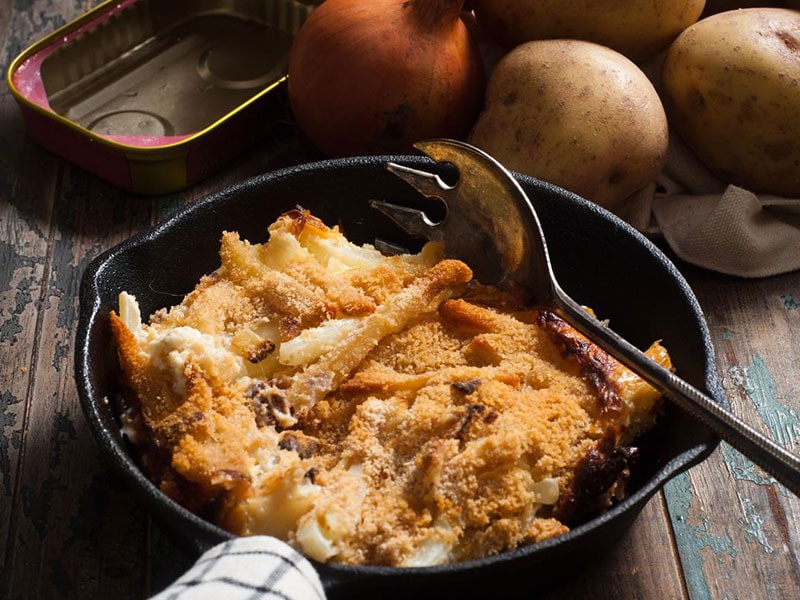
Janssons Frestelse, or Jansson’s Temptation in English, is a potato gratin that has become synonymous with Swedish Christmas celebrations.
This savory dish is a delicious mix of potato juliennes and sprat filets, anchovies, or pickled herring, layered with onions and generously doused in a rich blend of milk and cream. In some renditions, the casserole top is basted in butter and sprinkled with breadcrumbs before baking.
This Swedish classic is named after chef Jansson, who invented it in the late 1900s. With the first written recipe dating back to 1940, Janssons Frestelse has stood the test of time and is a cherished dish in Swedish cuisine.
Kalops (Beef Stew)
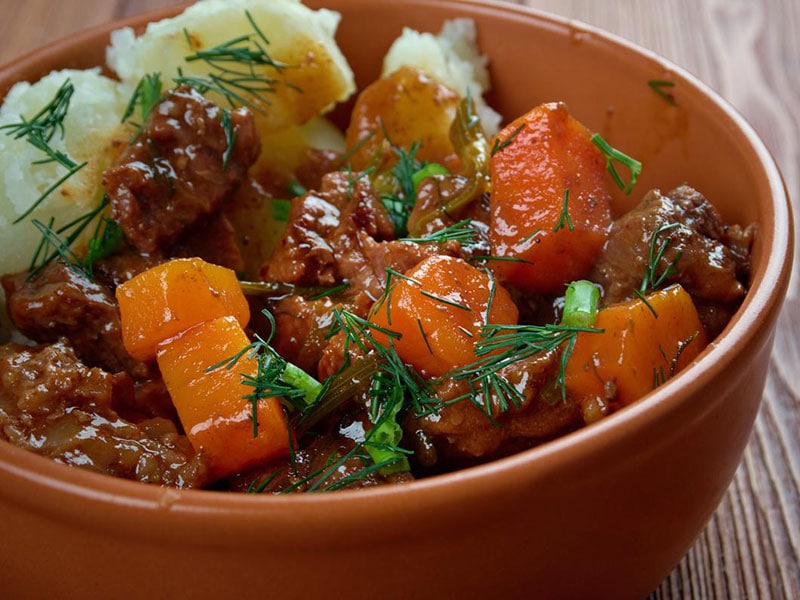
Kalops is a comforting beef stew rooted in the culinary traditions of Sweden and Finland. This slow-cooked marvel combines beef and bone marrow with onions, carrots, and a unique blend of Swedish spices, including whole peppercorns, bay leaves, and pimento (allspice).
Certain versions may use flour to give the stew a thicker consistency. Familiar sides like boiled potatoes and pickled beets make it a full-fledged meal, loved at home and savored in many Swedish restaurants.
Originating from Skåne, the southernmost region of Sweden, the stew has a popular variation known as Skånsk Kalops, which is well-known for its inclusion of carrots.
Wallenbergare (Veal Patties)
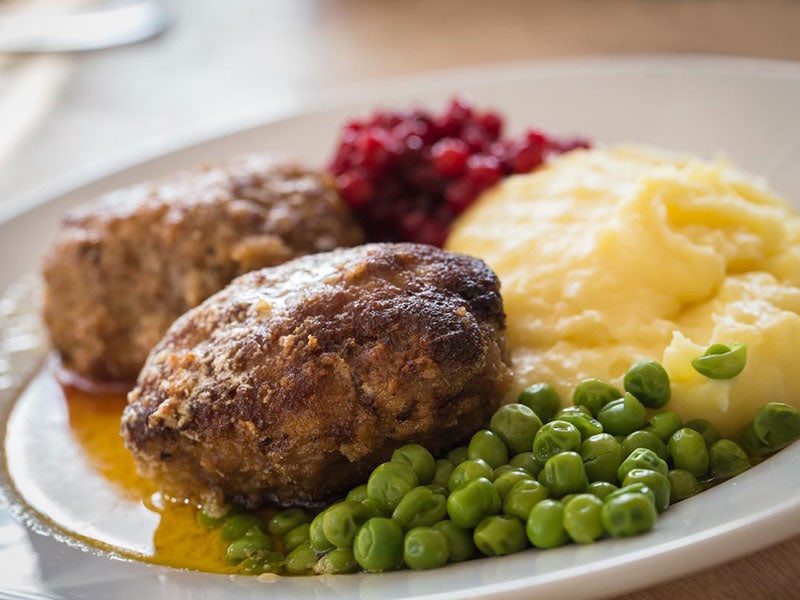
Wallenbergare is a classic Swedish patty named after the esteemed Wallenberg family. Historical records suggest that this unique blend of ground veal, egg yolks, and cream, rolled in breadcrumbs, originated from Charles Emile Hagdahl.
Hagdahl, the Wallenberg family’s father-in-law and a renowned Swedish chef, is said to have created this dish in the late 1800s.
When served with green peas, carrots, boiled or mashed potatoes, and lingonberry jam, Wallenbergare becomes a comforting meal. Each bite brings forth the richness of the veal and cream, contrasted with the sweet-sour notes of lingonberry jam.
Tunnbröd (Swedish Flatbread)
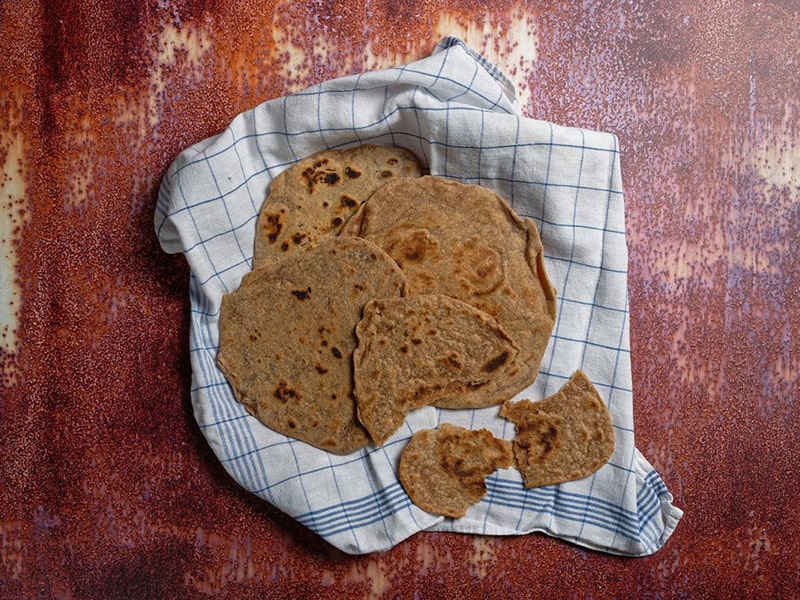
Tunnbröd, a Swedish flatbread, has many variations based on the grain, leavening agent, and rolling pin used. The dough is a harmonious mix of wheat, barley, oat, and rye, while the leavening agents vary between yeast and ammonium carbonate.
The soft version of this flatbread, much like a crêpe or tortilla, serves as a wrap for countless fillings, such as mashed potatoes, roasted herring, a hot dog, or even vegetables, ketchup, mustard, and shrimp salad. This delicious creation is known as the Tunnbröd roll.
But Tunnbröd’s versatility doesn’t end here. There is also a crisp variant that is notably thinner and more compact.
Ostkaka (Cheese Cake)
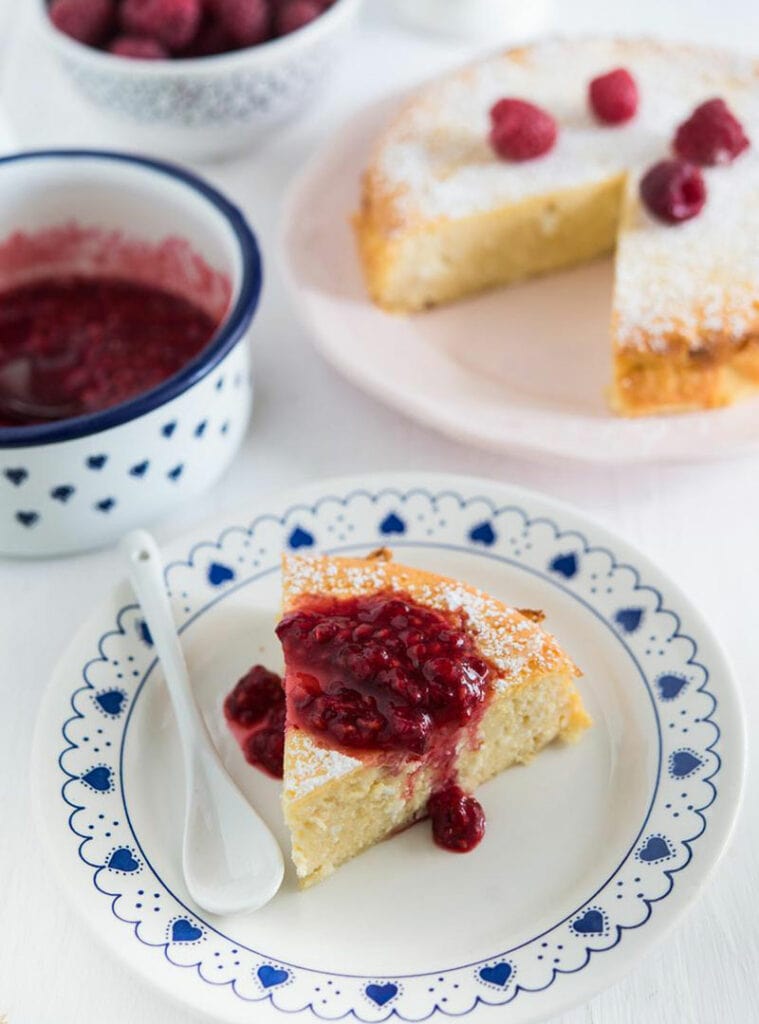
Ostkaka, an age-old Swedish specialty, is a culinary narrative of simplicity and elegance. It takes the cheesecake title but stands distinctively apart from its American counterpart.
When I first tasted Ostkaka, I was pleasantly surprised by its much lighter, less sweet, and less fattening nature with a somewhat custardy consistency.
This deliciousness is thanks to rennet, which converts milk into cheese. The charm of Ostkaka lies in its simplicity; a graceful blend of flour, eggs, sugar, cream, and almonds, all baked to perfection.
Another notable version of Ostkaka uses cottage cheese, offering a unique texture. Ostkaka has a historical background of being baked in copper pots, contributing to its middle-eating tradition.
This dish tastes best at room temperature, neither too hot nor too cold. Additional garnishes such as fresh berry syrup or tart jam can enhance its taste, while toppings like whipped cream and strawberries provide an interesting contrast.
There are two notable variations of Ostkaka: one from Småland in the south and the other from Hälsingland in the north. The southern variant includes ingredients like almonds, egg, cream, and sugar, resulting in a different texture.
Knäck (Swedish Christmas Toffee)
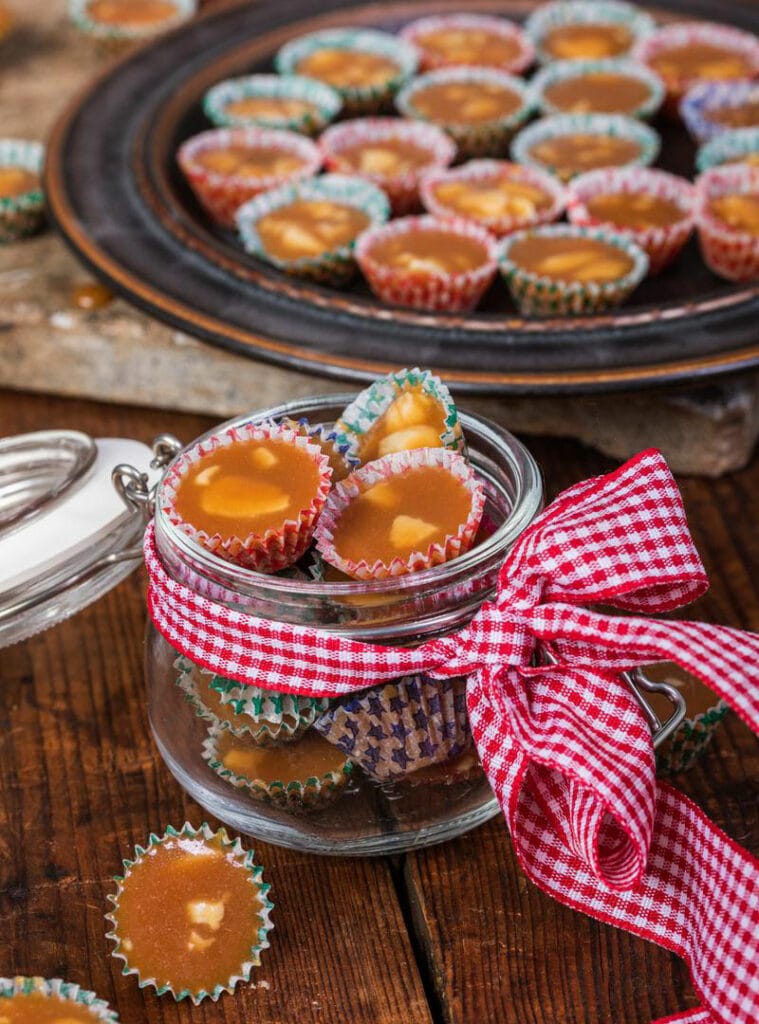
Knäck, also known as Swedish Christmas butterscotch, holds a special spot in the holiday festivities of Sweden. The name itself translates as “crack” or “break,” referring to its signature hard, crispy texture.
When I tasted this Swedish toffee, its concoction of caramelized sugar and either butter or heavy cream struck me as brilliantly indulgent. This holiday specialty becomes even more irresistible when sweetened with syrups, infusing a deep, tantalizing sweetness.
Then, it’s enriched with chopped nuts, adding a pleasing crunchiness. Usually, it’s best to place the toffee in miniature paper molds or cups, creating individual bite-sized treats.
Hönökaka (Soft Wheat & Rye Flatbread)
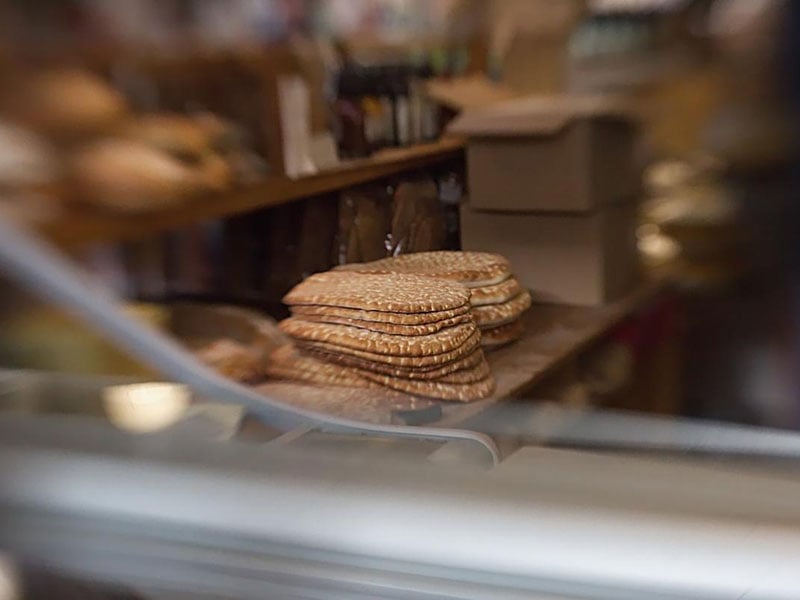
Hönökaka – a soft wheat and rye flatbread – stands out among all classic Swedish bread types. This flatbread’s appeal lies in its light, almost cake-like texture.
Its ingredients include milk, butter, white flour, rye flour, sea salt, yeast, ljus sirap (Scandinavian light syrup), and the unique hjorthornssalt. Hjorthornssalt, once made from deer antlers, now employs ammonium carbonate and imparts a fluffy, light texture to the bread.
Making Hönökaka involves raising the dough to double its original size, kneading, and flattening. It’s then pricked with a kruskavel, a knobbly rolling pin, before being baked in the oven. Serving Hönökaka warm with cheese, jams, honey, butter, or pickled herrings elevates the flavor.
Blodpudding (Swedish Black Pudding)
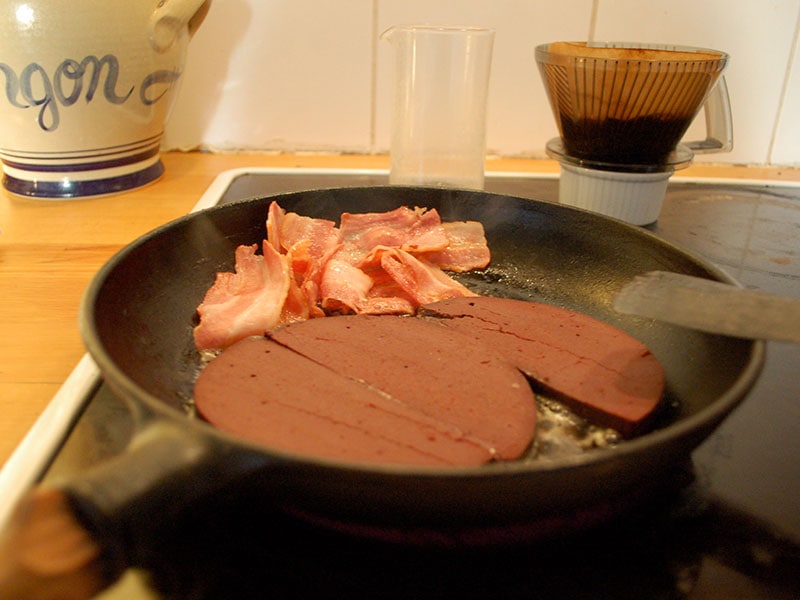
Blodpudding, a Swedish black pudding, uses animal blood, with pig blood being a typical choice. It’s mixed with flour, milk, Svagdricka or beer, butter or lard, and aromatic seasonings like clove, pepper, and marjoram.
Once well-combined, it is cooked in the oven, thinly sliced, and fried with butter or oil, giving it a distinct sweet and spicy taste. Blodpudding is a common lunch or dinner in most Swedish homes, schools, and restaurants.
Its variant, Blodkorv or blood sausage, with added pork fat, raisins, and spices, also carries a robust flavor profile. Accompaniments for Blodpudding are also various: lingonberry jam or syrup, crispy bacon, Swedish snaps, or milk.
Julskinka (Christmas Ham)
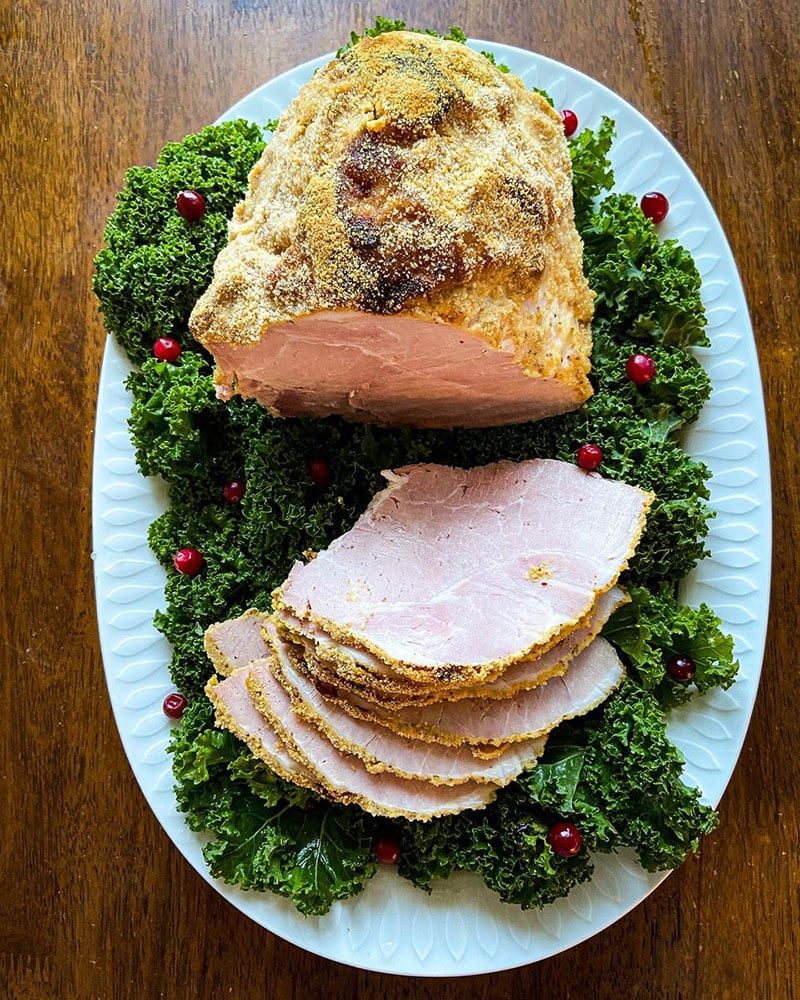
Julskinka, the Christmas ham, holds a special place on the Swedish Christmas julbord. Preparing this treat involves brushing it with a unique blend of mustard and egg yolks before topping it with breadcrumbs. Once baked in the oven, the result is a tender and moist ham.
Whether served cold or just slightly warm, Julskinka is a favorite at the festive table. To enhance its rich taste, it goes with sweet, coarse mustard and smörgåsgurka pickles.
Hasselbackspotatis (Hasselback Potatoes)
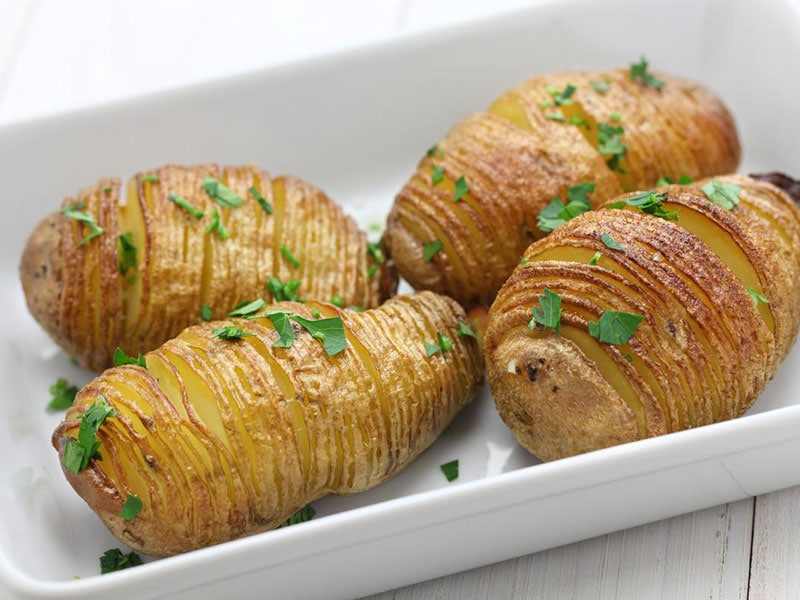
Hasselbackspotatis is a Swedish take on roasted potatoes, owing its unique appeal to an innovative cut: thin slices about halfway through the potato.
Hasselback potatoes were first invented in 1953 by a trainee chef Leif Elisson. He was working at the Hasselbacken restaurant in Stockholm at the time.
The potatoes themselves are a flavorful canvas when enhanced with various toppings. These can include breadcrumbs, cheese, sour cream, bacon bits, or parsley. They are best served with roasted meat or poultry, offering a pleasant contrast of textures and tastes.
Palt (Swedish Potato Dumplings)
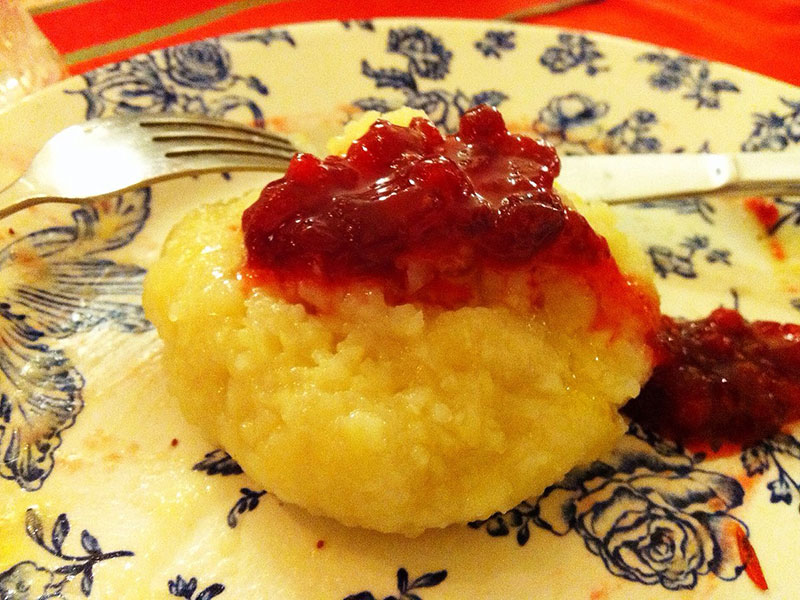
Swedish potato dumplings, known as Palt, are integral to Northern Sweden’s culinary culture, even earning a city-specific moniker, Pitepalt, from Piteå.
Grated raw potatoes combine with a dough crafted from rye, barley, or wheat flour to form a savory pocket. The filling is often sautéed onions and fried bacon.
Served with butter, lingonberry preserves, and a glass of cold milk, Palt presents a humble yet fulfilling meal. One standout version in this potato dumpling is Blodpalt, an intriguing twist incorporating animal blood.
Smörgåstårta (Sandwich Cake)
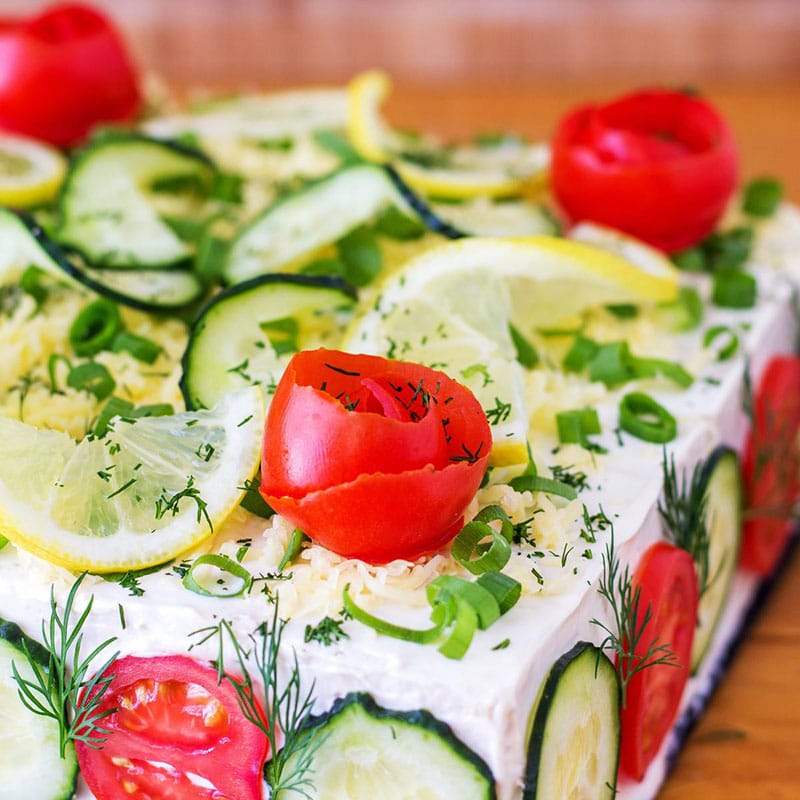
Smörgåstårta, a unique Swedish creation, takes the concept of a sandwich and presents it as a stunning layer cake. White or rye bread forms the layers, sandwiching fillings from two classic styles.
One style involves roast beef, ham, and cheese harmony, while the other highlights the sea’s bounty of salmon and seafood. These layers include caviar, pâté, cold cuts, shrimp, smoked salmon, cheese, eggs, and colorful Europe-native vegetables.
Cream cheese, mayonnaise, or yogurt, sometimes a combination, acts as a frosting, while additional vegetables or meats serve as garnish. This layered cake has made its mark on festive occasions, from birthdays, weddings, and graduation ceremonies to funerals and conferences.
Its popularity extends beyond Sweden’s borders to Estonia and Finland, while smaller portions are available in local cafés, grocery stores, supermarkets, and bakeries.
Kladdkaka (Sticky Chocolate Cake)
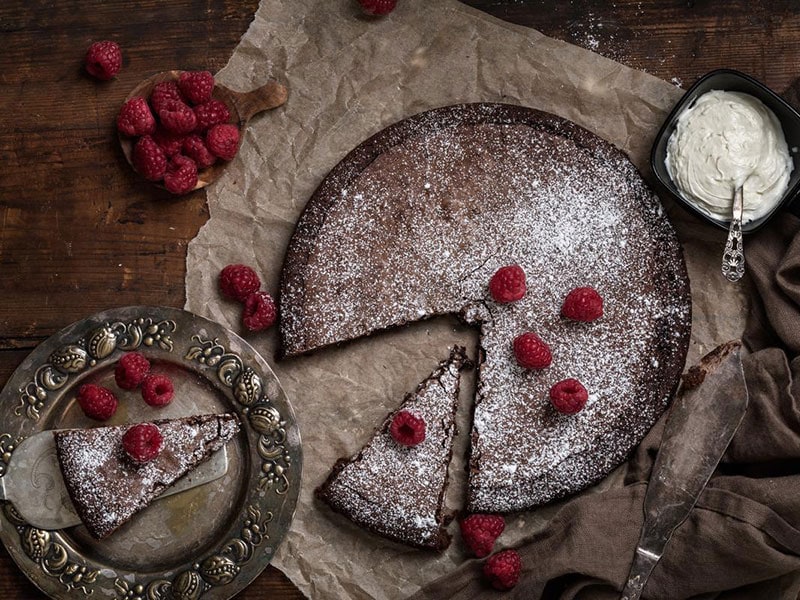
Kladdkaka is known for its exceptional creaminess and chocolaty richness. This sticky chocolate cake comes to life with eggs, sugar, flour, butter, and a generous dose of bitter cocoa or chocolate.
Its uniqueness lies in its composition, with no baking soda in its mix. This allows for an incredibly dense cake, oozing with a moist center, all contained under a thin, crunchy outer layer.
Just when you think it can’t get any better, Kladdkaka wears a snowy cap of powdered sugar and is often accompanied by ice cream or whipped cream.
This indulgent dessert has earned its place during fika, a traditional Swedish coffee break, as a sweet note to the casual conversation and coffee.
Kanelbulle/Kanelbullar (Cinnamon Buns)
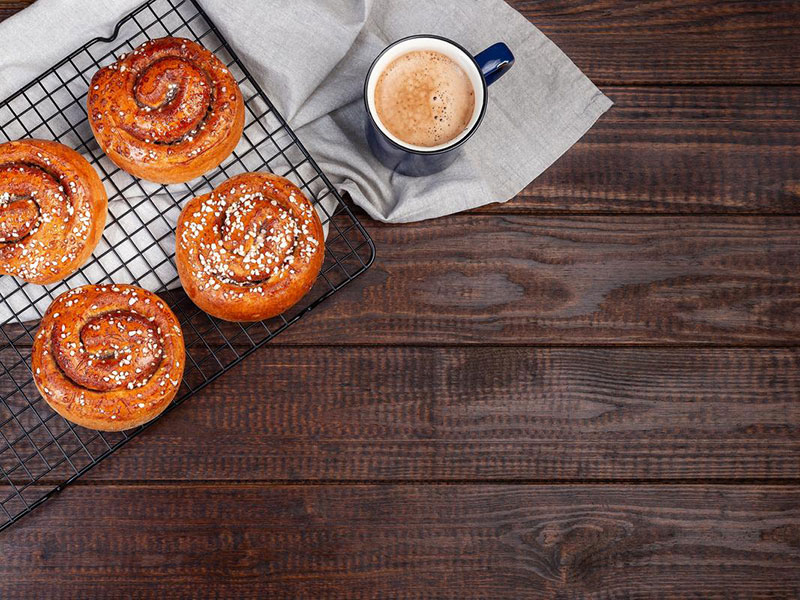
Kanelbulle, or cinnamon buns, is one of Sweden’s pride and joy in pastries. This tantalizingly sweet creation, imbued with cinnamon, cardamom, saffron, and vanilla, is derived from Vetebröd (Swedish cardamon bread).
This dough only requires simple ingredients like flour, milk, yeast, water, eggs, butter, and vanilla. To add an extra sprinkle of sweetness, sugar is either worked into the dough or sprinkled atop the final baked treat.
These buns serve as a wonderful companion to your morning cup of coffee. They are so cherished in Sweden that they have their own special day, October 4th, called Cinnamon Roll Day.
Whether at a cozy café, bustling bakery, or neighborhood food shop, you can always count on seeing Kanelbullar, perfect for a fika.
Knäckebröd (Swedish Crisp Bread)
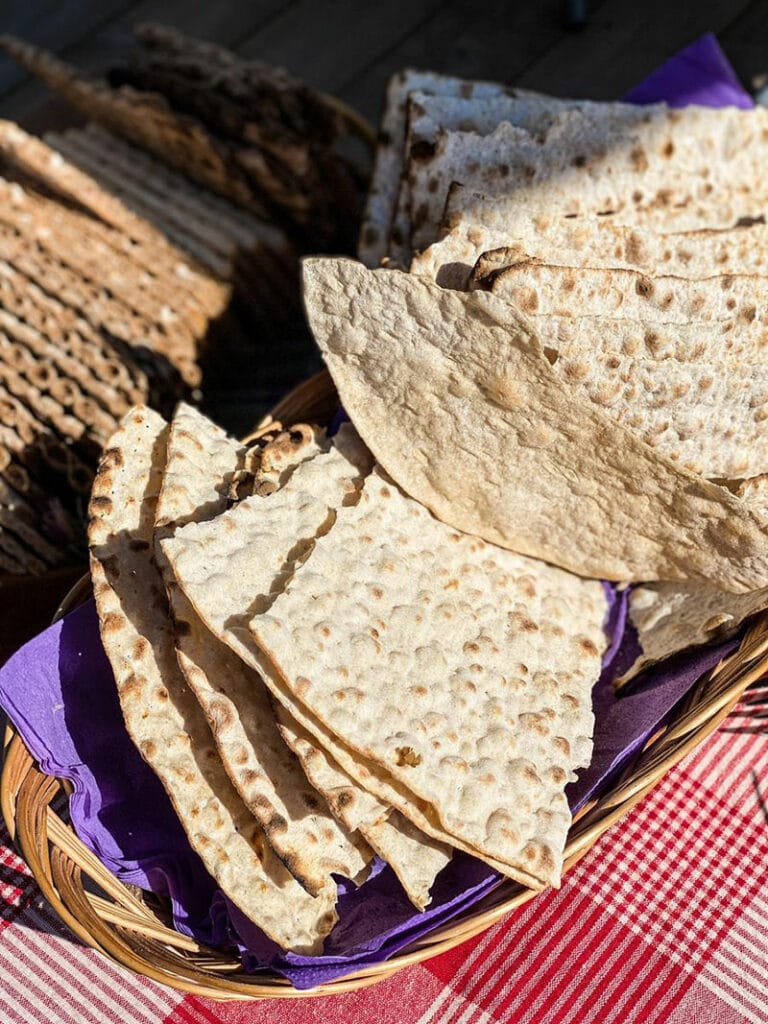
Knäckebröd, or Swedish crisp bread, holds a beloved place in the homes of many Swedes. Resembling a cracker with its crunchy texture and thin form, this bread is far from plain. Rye flour forms the backbone of this bread, providing its unique taste and texture.
However, this staple has a diversity, with different versions emerging depending on the seeds included, like sesame, sunflower, pumpkin, or flax seeds. While the flavor may be subtle, the toppings make this bread sing.
Cheese, ham, avocado, eggs, and tube caviar are loaded onto an open-faced sandwich. This bread has its origins dating back to 500 AD. Traditionally, Knäckebröd was large circles with a hole in the center, allowing people to hang the bread on long poles from the ceiling.
Toast Skagen (Shrimp Toast)
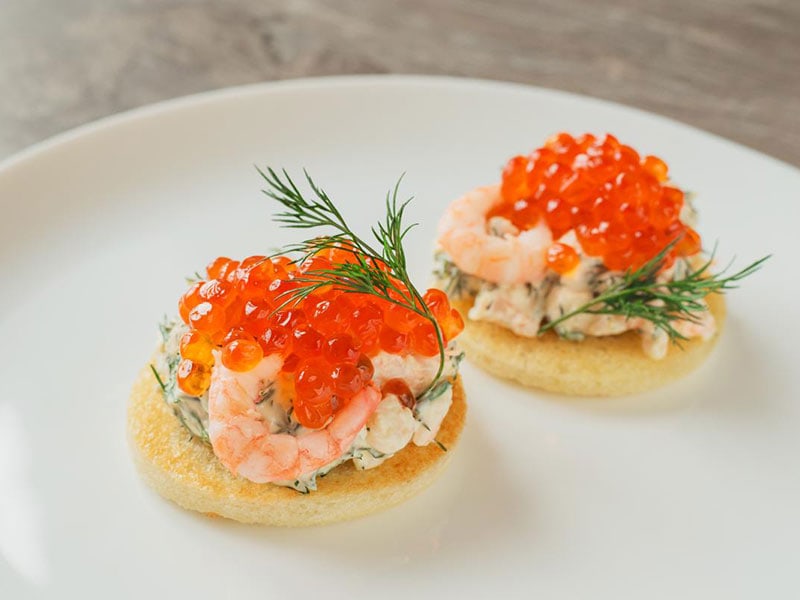
Named after Skagen, a fishing port in northern Denmark, Toast Skagen is indeed a culinary misnomer. This open-faced sandwich is a Swedish invention, not Danish.
It begins with white bread, crusts removed and sautéed in butter for a golden touch. Chopped shrimp gets mixed with mayonnaise, Dijon mustard, and dill, creating a rich and flavorful topping.
This topping goes on top of the bread, alongside a sprinkle of whitefish roe or “löjrom,” a prized caviar type from Northern Sweden. A dill sprig and a lemon slice provides the final touch.
The creation of Toast Skagen dates back to 1956 when chef Tore Wretman, known for running some of Stockholm’s top restaurants, invented it. Today, this dish appears at many dinner parties and restaurant menus as an appetizer.
Prinsesstårta (Princess Cake)
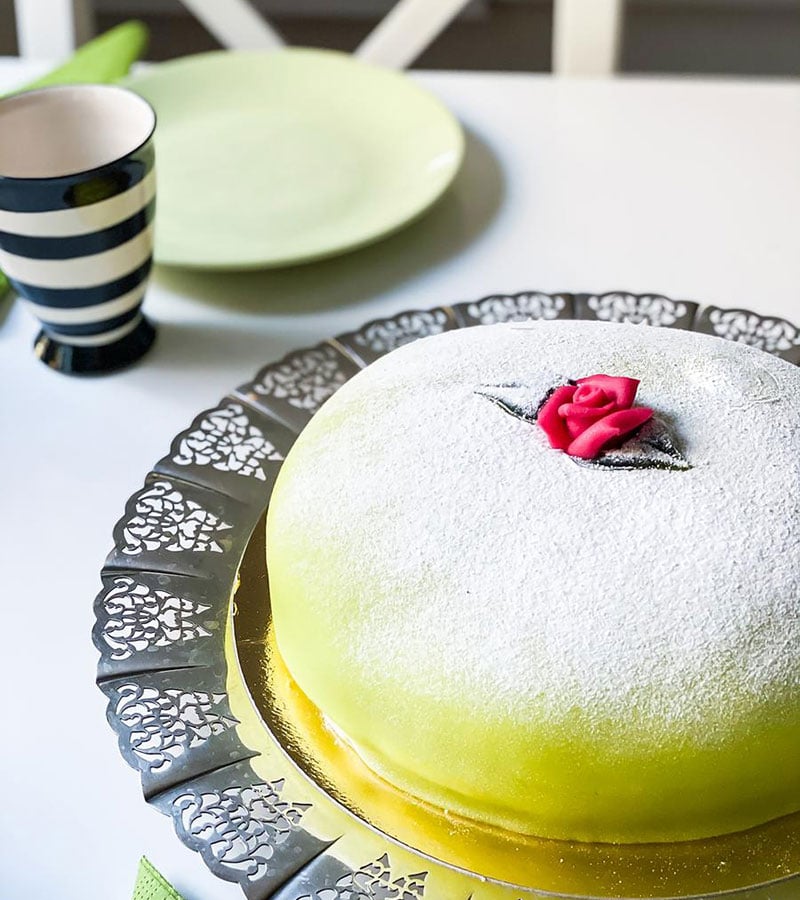
Prinsesstårta, or princess cake, has a special place in my heart. Its journey started in the 1920s as the brainchild of Jenny Åkerström. Its original name was Grön Tårta, referring to the green marzipan it used.
This cake first came to the public in the 1948 edition of Prinsessornas Nya Kokbok. And everyone loved it at first bite: sponge cake layers embraced by a coat of vanilla-flavored buttercream, crowned with whipped cream, marzipan, and a charming pink sugar rose.
In the 1950s, the cake’s popularity grew. Now, it has become a mainstay at every Swedish special event, from graduations to birthdays. You will see this cake in any Swedish konditorei (bakery) display window.
Over time, variations have emerged. The cake has evolved into a dome shape with a bonus layer of raspberry jelly. The colors also change with the seasons: yellow to welcome Easter, red to celebrate Christmas, orange for Halloween fun, and white to mark the joy of weddings.
Västerbotten Cheese
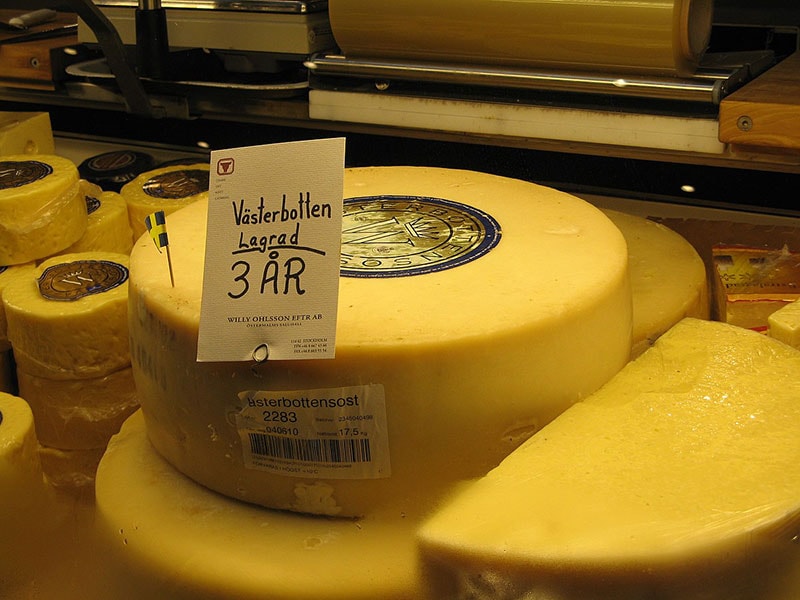
Meet Västerbotten cheese, a cross between Cheddar and Parmesan. I first learned about it during a trip to northern Sweden, from where it originates. With every bite, you can taste its firm, granular texture and a perfect balance of salty and sweet flavors.
The crafting of this cheese, I learned, is a meticulous process, needing at least 14 months of aging on spruce shelves. Ulrika Eleonora Lindström, the cheese’s inventor back in 1872, would surely be proud of the process that’s been maintained.
In Sweden, they crown it the king of cheese, and I couldn’t agree more. I particularly appreciate how beautifully it pairs with pickled herrings, knäckebröd, and fruits like grapes, cloudberries, and figs.
It’s a must-have at the late summer crayfish party, and other celebrations such as Christmas, Easter, and Midsummer are incomplete without it.
Falukorv (Falun Sausage)
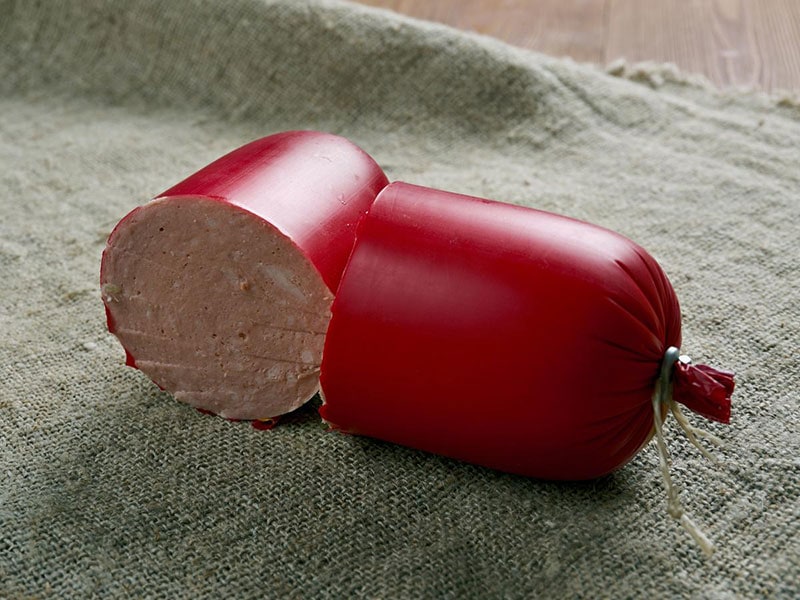
Here’s a unique food to savor: Falukorv, also known as Falun sausage, originally from Falun in the Dalarna district of Sweden. It’s a distinctive blend of pork and beef or veal meat, which must make up at least 40% of the mixture.
This combination is finely ground and mixed with potato starch, water, and mild spices, presenting a brownish-pink hue. The result is a smoky, salty delight versatile in the kitchen. Baked, fried, sandwiched, or even used in a beef Stroganoff – each one was satisfying in its own right.
It often goes with stewed macaroni, a cream tomato sauce, or ketchup to balance the rich flavors. Despite its rarity in restaurants, Falukorv has a unique charm that gives a tasty glimpse of Sweden’s culinary culture.
Semla (Fat Tuesday Buns)
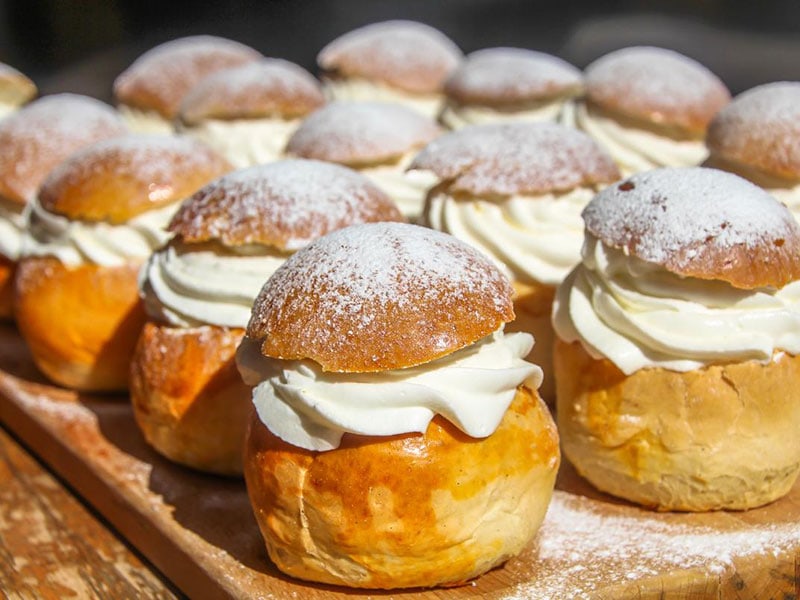
In Swedish winter, the scent of Semla fills the air. This cream bun has evolved from the Middle Ages to modern tables. As a symbol of wealth in earlier times, it boasted high wheat content and became even richer with added whipped cream in the 16th century.
But the delicious journey didn’t stop there; the 1850s brought in a delightful twist in the form of almond paste. Semla is a fixture in Swedish bakeries from the end of Christmas throughout March.
Traditionally, Semla is a fluffy, cardamom-scented wheat bread bun. The locals slice it in half, fill it with almond paste and vanilla whipped cream, and lightly dust it with powdered sugar.
And each February or Fettisdagen (Fat Tuesday) marks the pinnacle of Semla consumption, an indulgence before the start of Lent. Nowadays, bakers experiment with ingredients like chocolate or nuts.
Nyponsoppa (Rose Hip Soup)
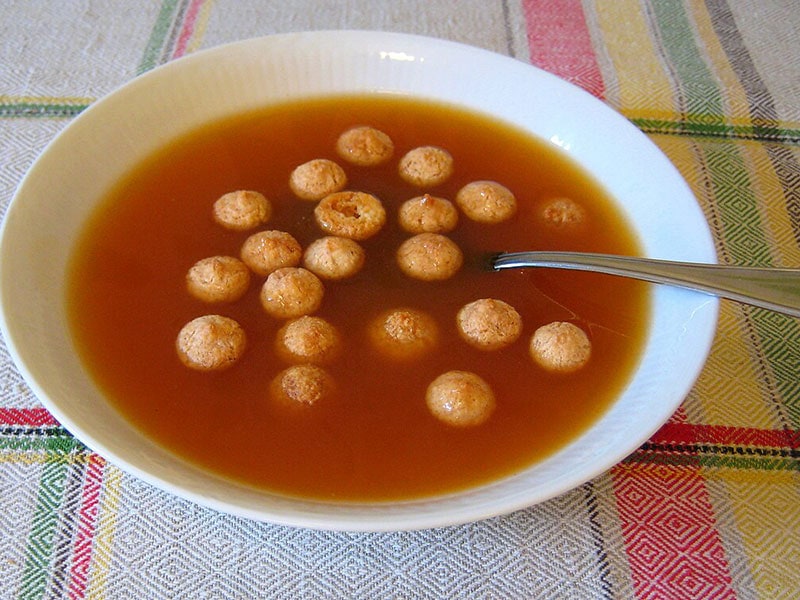
Nyponsoppa, the humble yet versatile rose hip soup, is truly a wonder of Swedish cuisine. As the star ingredient, rose hips, preferably fresh, are cooked and pureed with sugar, occasionally spiced with cinnamon and cloves for an aromatic kick.
The versatility of Nyponsoppa shines as it can be a starter, a refreshing beverage, a dessert, or even a breakfast item. For the latter, it’s lighter, more watery, paired with crisp bread for a wholesome start to the day.
Regarding serving, this pinkish delight holds no bounds. Sip it straight, enjoy with a dash of milk, or top it with vanilla ice cream, whipped cream, or almond macaroons known as ‘Mandelbiskvier’. Each combination offers a new perspective on the flavor profile.
Danish Delicacies
Pebernødder / Pepernoot (Peppernuts Cookies)
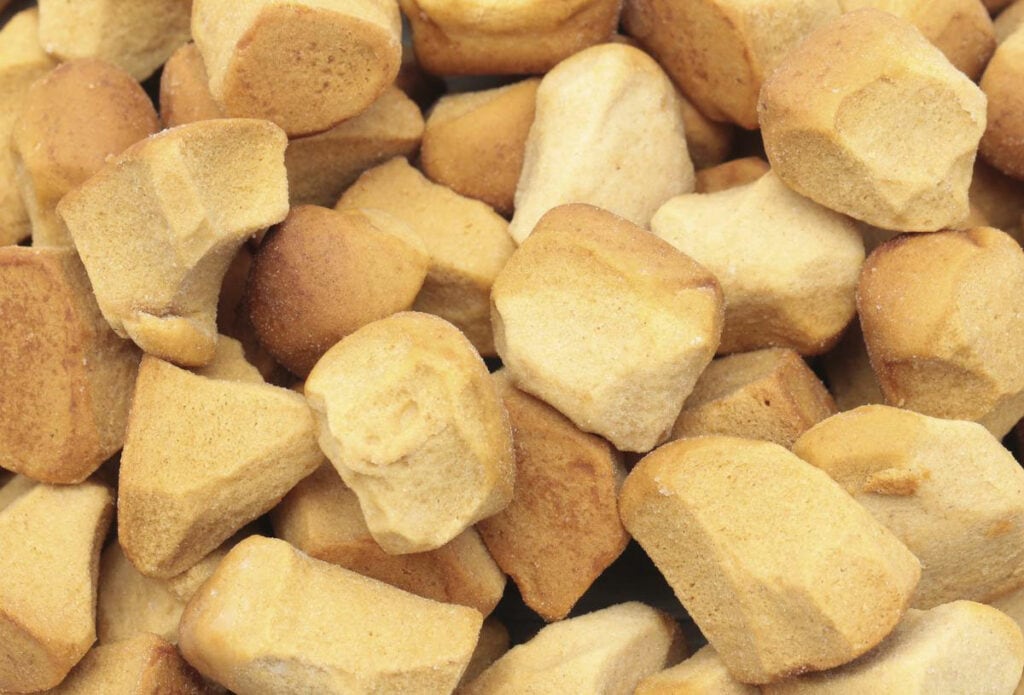
Pebernødders, or ‘pepper nuts’, are from the Netherlands and Belgium. Their association with the Sinterklaas holiday in early December makes them a tradition during the festive period.
These delightful cookies are prepared from flour, honey, and spices, including anise, cinnamon, cardamom, and cloves. Their small size and golden-brown hue are as appealing to the eye as their taste is to the palate.
They’ll gradually harden when exposed to air, enhancing their chewy texture. Despite resembling Kruidnoten (Dutch ginger nuts), Pebernødder stands independently due to its unique ingredients, such as anise.
Kagemand (Danish Birthday Cake)
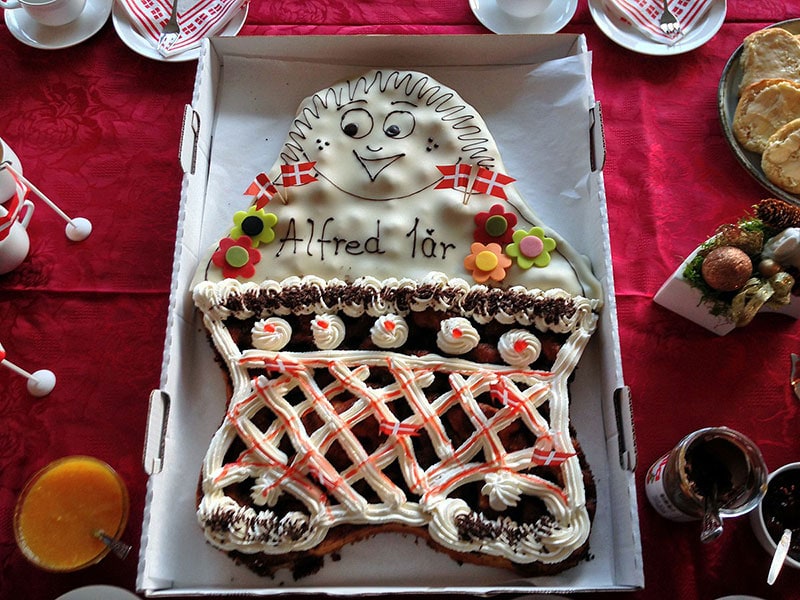
Kagemand, or Kagekone, is a Danish birthday tradition! Symbolizing the birthday child, this cake is shaped like a boy or a girl and is quite sizable. When it’s time for cake, the birthday child lifts a knife to the cake’s ‘throat’ and cuts off the head while their friends shout in anticipation.
Created from pastry dough, Kagemand is generously adorned with brown sugar or icing, Danish flags, and numerous sweets, such as fruits, nuts, or candies.
Brændende Kærlighed (Danish Burning Love)
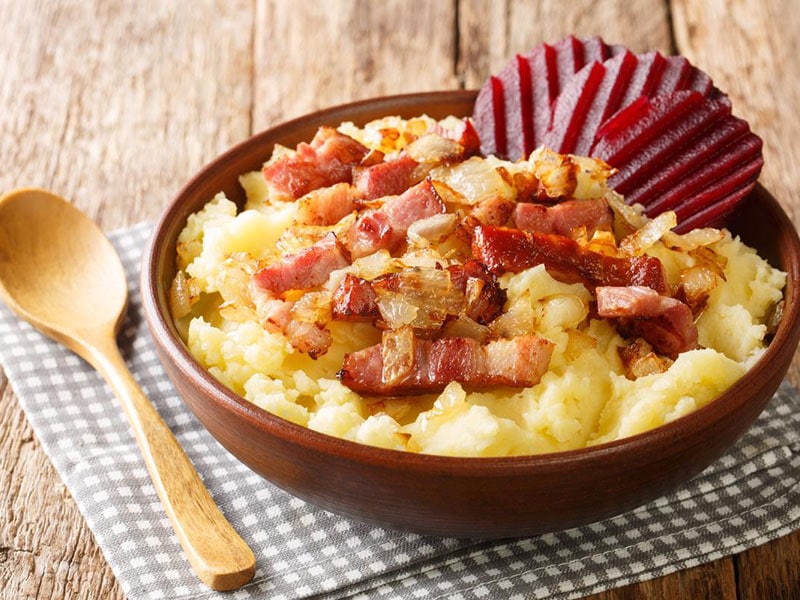
Brændende Kærlighed is a comfort food dish with a history rooted in Denmark’s rural and impoverished areas. Its culinary legacy stretches back over 100 years.
Simplicity is the essence of this dish, as its key ingredients are mashed potatoes, milk, and butter, with diced bacon added on top for a savory touch. The creamy potatoes combine beautifully with the crisp bacon, creating a tempting combination.
For those who fancy extra flavor, I suggest adding chopped parsley, leek, or grated nutmeg before serving. Or pair it with pickled beetroot, which acts as a delightful side dish.
Making Burning Love is also uncomplicated, only requiring you to boil and mash the potatoes with milk and butter.
Leverpostej (Liver Pâté)
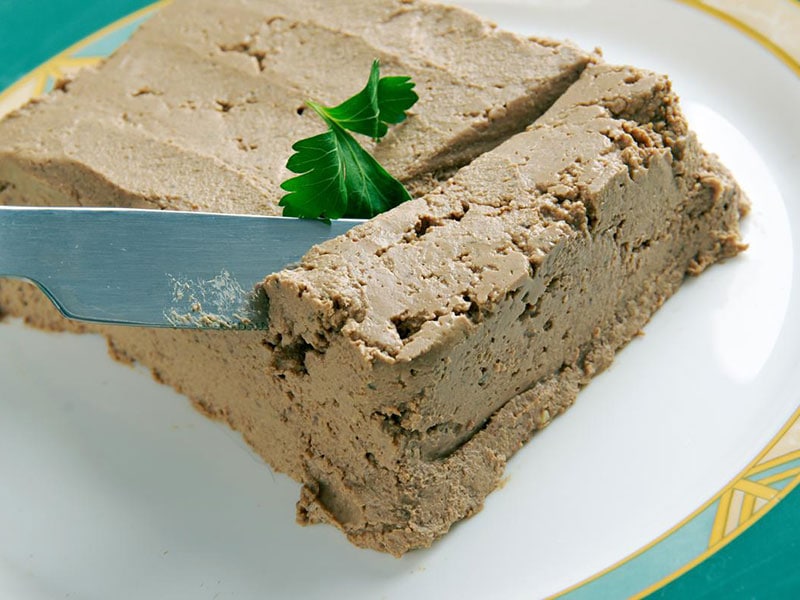
Leverpostej, or liver pâté, is a smooth and savory dish from Denmark. This spread is created from many ingredients like pork liver, flour, onion, pepper, eggs, and milk.
The intriguing aspect of this dish lies in its adaptability, as different types of liver can subtly shift the flavor, for example, the mild taste of chicken liver. Leverpostej is perfect for enhancing the taste of Danish open-faced sandwiches or rye bread.
Moreover, it pairs well with thinly sliced cucumbers, adding a crisp, refreshing contrast. The trick to perfect Leverpostej is maintaining an internal temperature of 175 degrees Fahrenheit during preparation.
Once made, it remains fresh in the fridge for a week, ready to add a gourmet touch to your quick bites and snacks.
Jødekager (Jewish Cookies)
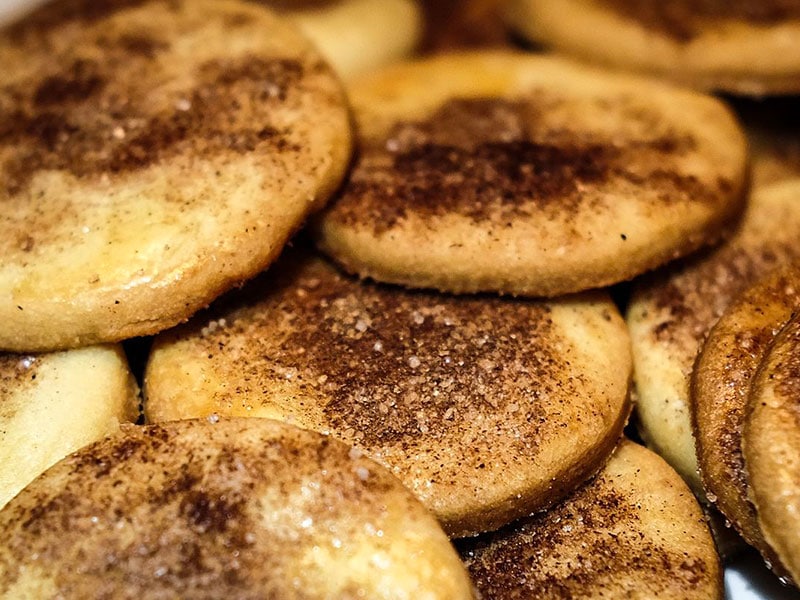
Jødekager, also known as Jewish cookies, is from Jewish bakeries of the 1700s. These Danish cookies are integral to the Christmas season, easily found in bakeries and stores nationwide.
The charm of these cookies lies in their simple ingredients: flour, sugar, butter, and eggs. What makes them distinct is the warming touch of cinnamon, mingling with the crunch of chopped nuts like almonds.
If you fancy baking these cookies at home, remember to keep the dough cold before cutting it into pieces. This little trick will reward you with extra crispy cookies once baked.
Stored in an airtight container, these cookies will stay fresh for several weeks, allowing you to extend the holiday cheer slightly longer.
Hakkebøf (Minced/Chopped Beef With Fried Onions)
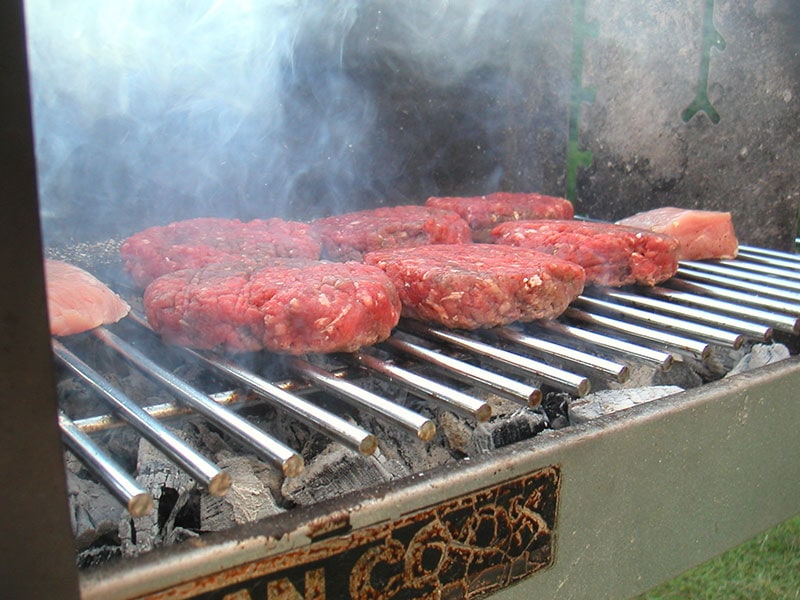
Rooted in the 1800s, Hakkebøf is more than just a dish; it’s a tradition loved across Denmark. This humble hamburger patty transforms into a Danish culinary wonder, all through coarsely minced beef seasoned with salt and pepper and carefully fried.
Fresh parsley leaves add a pop of color and freshness to the dish. Crispy fried onions, boiled or roasted potatoes, and pickled beets or cucumbers are quintessential companions that round out the plate.
Rugbrød (Danish Rye Bread)
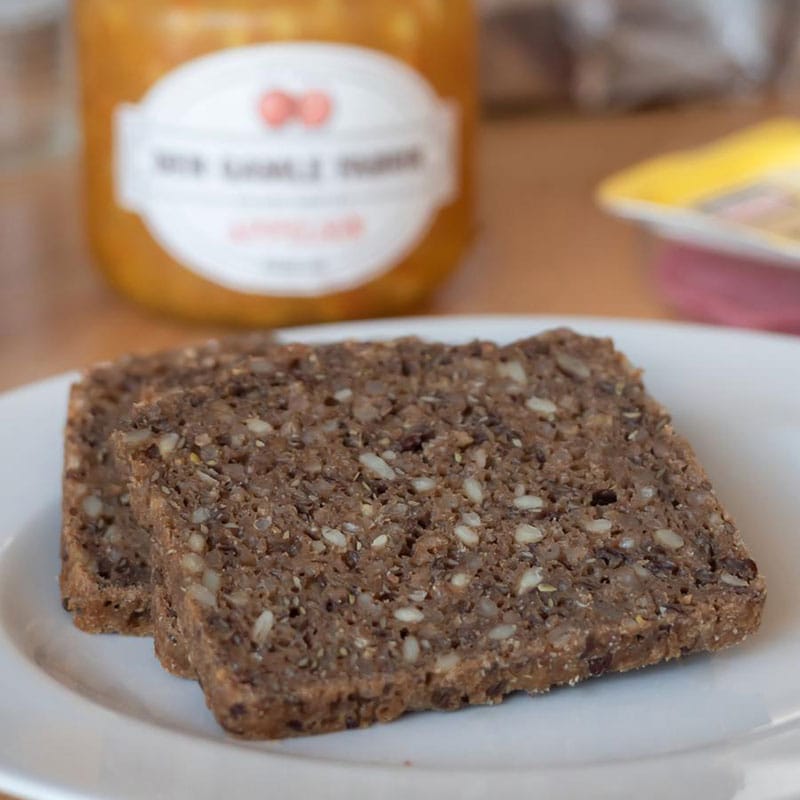
Rugbrød, a Danish rye bread, carries a culinary history of over a thousand years within its dense, delicious folds. This brown, rectangular loaf measures a satisfying 5 inches high and stretches 10 to 12 inches long.
Rugbrød is a seeded-sourdough loaf fashioned primarily from rye flour and assorted seeds, such as linseeds, sunflower seeds, and flax seeds. The soul of Rugbrød lies in the sourdough starter, a fermented blend of flour and water giving the bread its distinct sour taste.
Every loaf of Rugbrød is unique. The type of rye flour, the sourdough starter, and the fermentation time influence its flavor and texture. With its dark color and heavy structure, this bread bursts with flavor and nutrients.
Slather on some butter or use it as a base for Smørrebrød, a Danish open-faced sandwich. You may also find Rugbrød harmonizing well with smoked ham, smoked salmon, or other fish-cured meats.
Stegt Flæsk (Fried Pork Belly With Parsley Sauce)
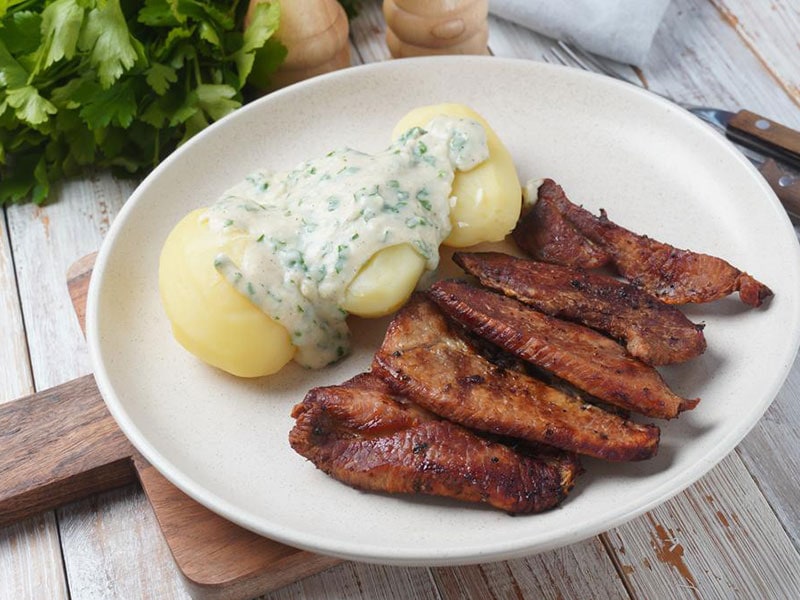
Stegt Flæsk, originating from Denmark’s rustic kitchens of the early 1800s, stands proud as the national dish today. The name encapsulates its essence, with ‘Stegt’ translating to ‘fried’ and ‘flæsk’ referring to ‘strips of pork belly.’
The dish comprises fried slices of pork belly, boiled potatoes, and a parsley sauce. If you are not sure sure which pork cut to pick, choose the belly or breast of the pig. And they should be about 1/4 inch thick, then simply season them with salt and pepper.
This fried delicacy is served with boiled potatoes and a parsley sauce. The sauce starts with butter, flour, and milk and simmers until thickened but not burned, which demands a keen eye and swift action. The final touch is some freshly chopped parsley on top.
Æblekage (Apple Cake)
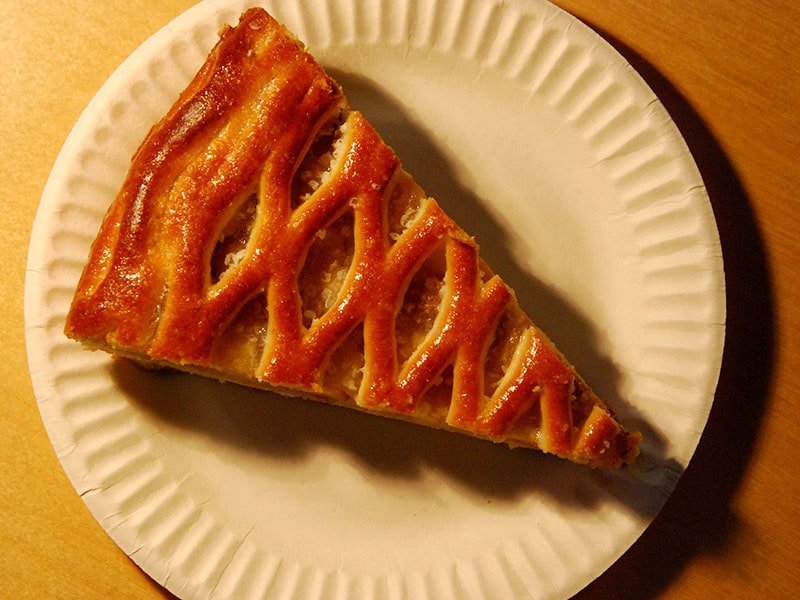
Æblekage, a classic Danish dessert, is translated to ‘apple cake’ despite no baking involved. This dessert strays from the beaten path by featuring layers of stewed apples.
The choice of apple variety can affect its flavor: Ambrosia for a sweeter touch, Crimson Snow for juicy appeal, or Honeycrisp to inject a tart kick. Harmonizing with the apples are these simple essential companions: butter, rolled oats, sugar, and a hint of cinnamon.
The crowning glory is a dollop of smooth whipping cream. Often the spotlight of an afternoon, Æblekage pairs wonderfully with a hot cup of coffee.
Flæskesteg (Danish Roast Pork)
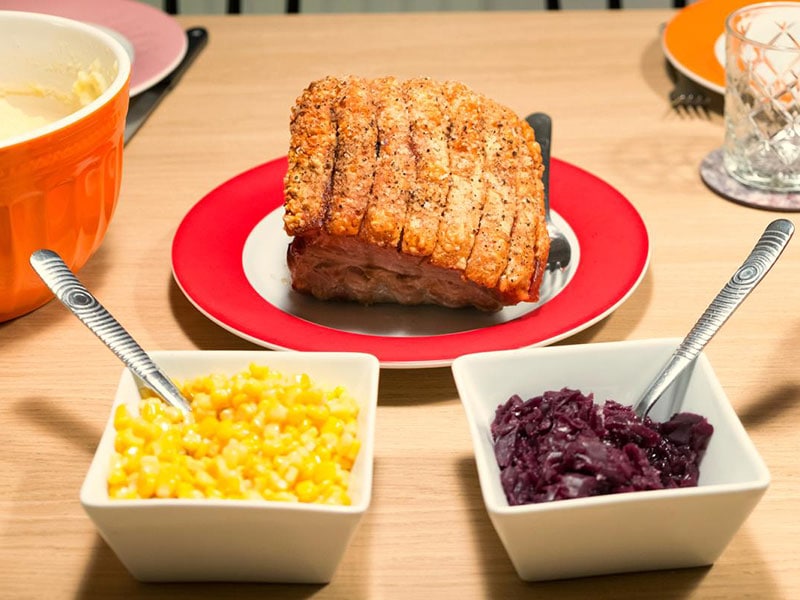
Flæskesteg hails from Danish kitchens and boasts stunning crispy rind. Don’t let its prominence during Christmas feasts fool you; it’s a fantastic dinner option all year round.
A select cut of pork, ideally loin, is adorned with salt and bay leaves to create this culinary marvel. For an ultimate indulgence, Flæskesteg is served alongside Rødkål, a spiced red cabbage dish, and embraced by a rich brown sauce.
The crispy rinds come down to three simple steps. First, place a healthy layer of fat on the pork cut. Afterward, pre-boil the rinds. The final touch is baking the pork roast horizontally in the oven.
Tarteletter (Chicken and Asparagus Tartlets)
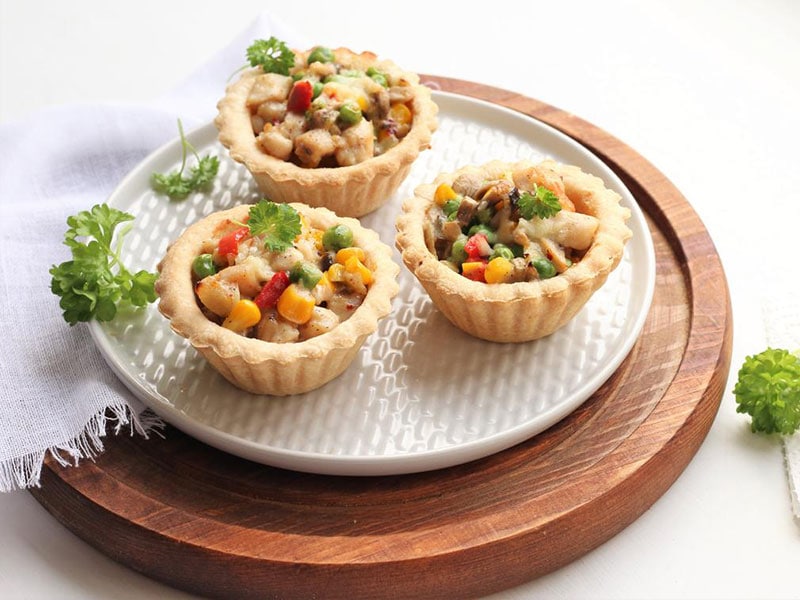
Tarteletter, known as ‘hens in tartlets’ in Denmark, may be an old recipe, but it has stood the test of time, maintaining popularity through the generations. This Danish dish consists of buttery, flaky pastry shells filled with a creamy mixture of chicken and asparagus.
Fresh asparagus lends the best flavor, but when out of season, canned ones are a solid alternative. The delicate, crisp pastry contrasts with the smooth, rich filling, making Tarteletter an appetizer suitable for any meal: a regular home dinner, a Christmas celebration, or a buffet spread in a Danish restaurant.
And in Denmark, you can easily find ready-made pastry shells in the supermarket, allowing you to make this Danish dish in your kitchen.
Koldskål (Cold Buttermilk Soup)
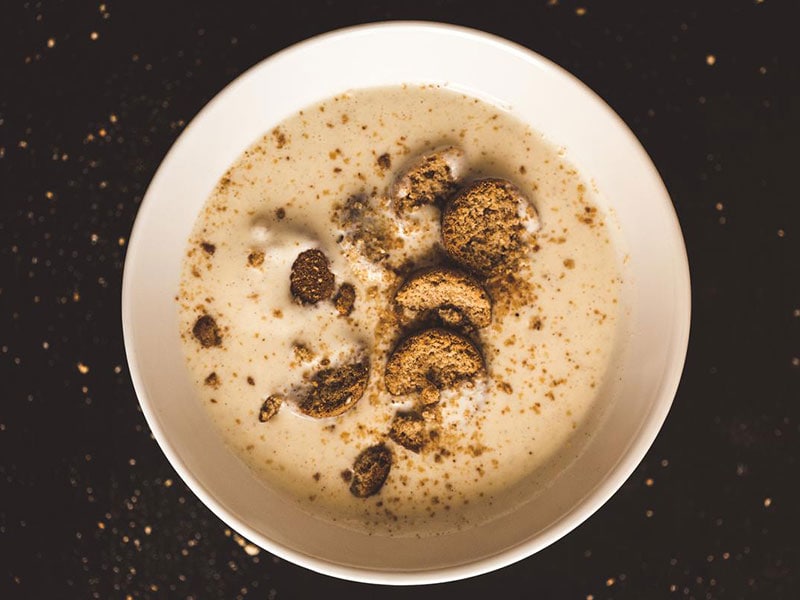
Koldskål, affectionately known as “cold bowl” in Danish, is a mixture of buttermilk, sugar, eggs, vanilla, and other dairy ingredients, such as plain yogurt.
The outcome is a sweet, creamy delight served chilled. It’s an ideal refreshment for warm afternoons. It’s also versatile, whether a dessert or a snack. op it with Danish Kammerjunker biscuits or fresh fruits like strawberries and blueberries to make it more irresistible.
Processed versions are available, but don’t let that stop you from preparing Koldskål at home. It’s a straightforward process, especially if you have a hand mixer.
Kammerjunker (Double-Baked Cookies)
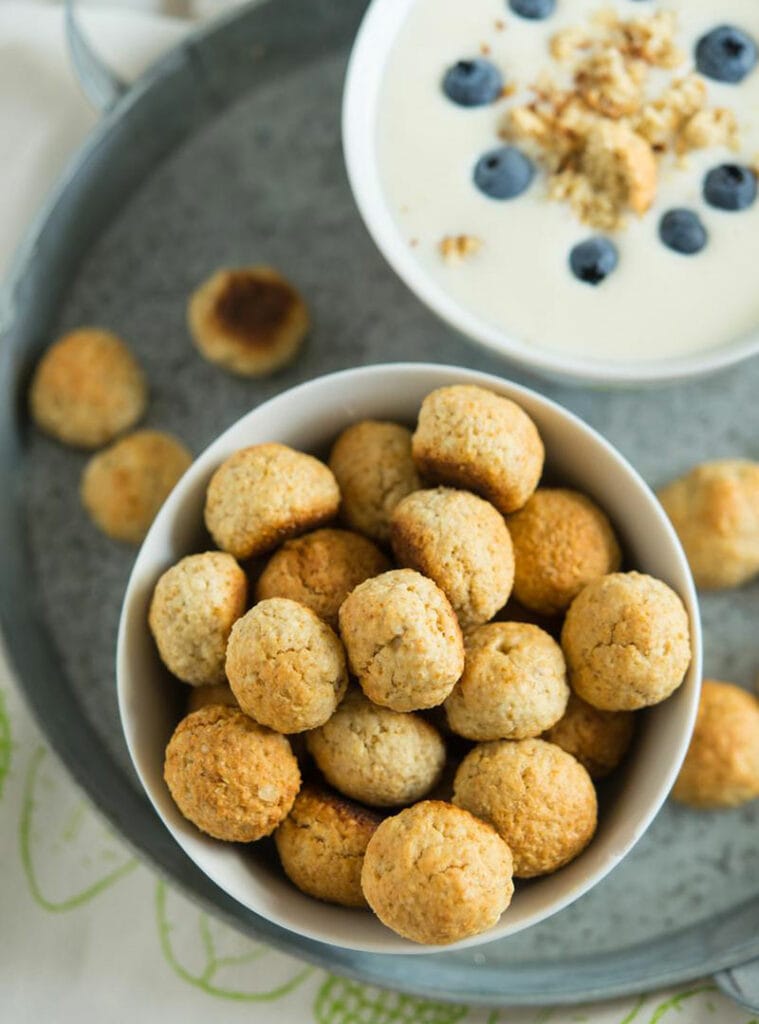
Kammerjunker is little cookies that have made its name in Denmark, especially during the warm summer months. These small, crisp bites are a beloved partner to Koldskål.
To make these beauties, combine basic ingredients like wheat flour, butter, eggs, baking soda, sugar, and salt. Add lemon zest, vanilla, or cardamom for an authentic Scandinavian touch.
After forming the dough, let it rest for an hour in the fridge to firm up. Once chilled, roll the dough into smaller balls; each then forms into a round cookie. This is where it gets interesting, as Kammerjunker requires two baking stages to achieve its signature crispness.
Drømmekage (Dream Cake)
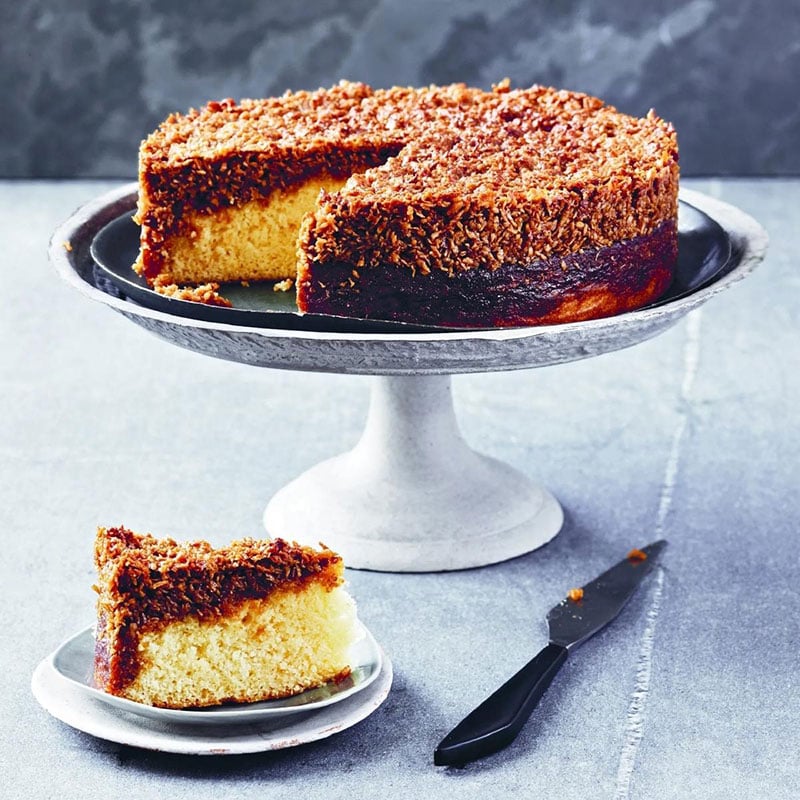
Drømmekage is a traditional Danish delight. Its roots are in the small town of Hjallerup, Denmark, where Jytte Andersen baked her way to victory in a local contest with this cake.
The foundation is simple cake ingredients: flour, butter, milk, eggs, baking powder, sugar, etc. But what gives the Drømmekage its unique charm is the topping of coconut flakes.
Here’s a handy tip: you can choose between unsweetened or sweetened coconut flakes. If you go for the sweetened variety, remember to adjust the sugar. As you lift Drømmekage from the oven, be mindful of the caramel top, as it’s bubbly and quite hot.
Stjerneskud (Shooting Star)
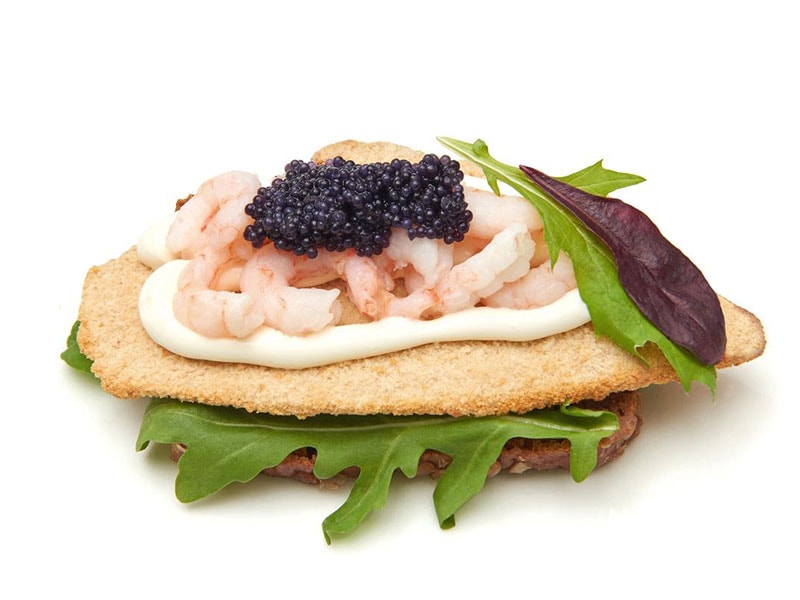
Stjerneskud is a classic example of a Danish open-faced sandwich. The credit goes to Ida Davidsen, a renowned Danish chef who owns a Smørrebrød restaurant in Copenhagen. Her eatery alone has over 280 styles of these open-faced sandwiches.
Various lunch restaurants and cafes across Denmark also serve Stjerneskud. This sandwich includes white or rye bread, fried fish filets, shrimp, caviar, Thousand Island dressing, lemon slices, and asparagus.
Add ground black pepper and poach or steam the fish before frying it. And one more thing, the bread needs to be toasted.
Wienerbrød (Danish Pastry)
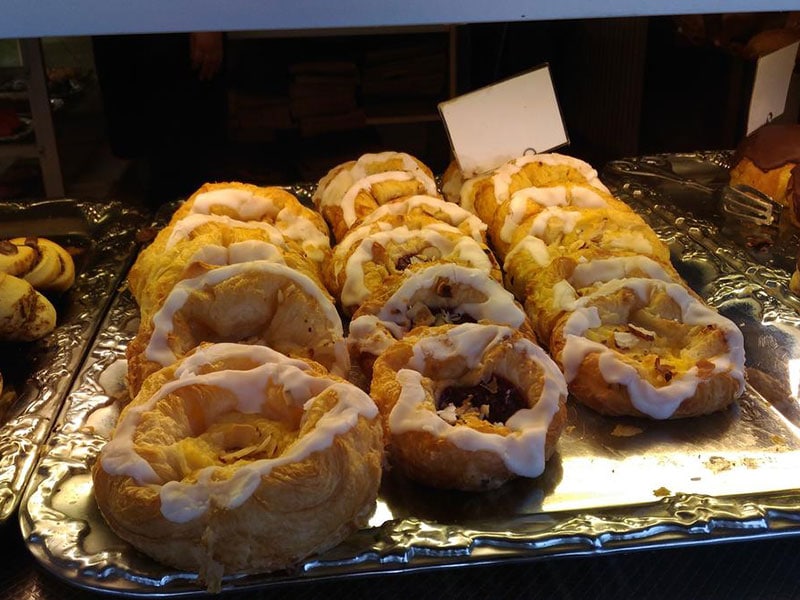
If you’re a pastry lover, you may already be familiar with Wienerbrød. Ironically, this Danish specialty originated in Vienna and came to Denmark with the Austrians.
Wienerbrød is a sweet, layered, laminated pastry. Its yeast-leavened dough includes sweet ingredients like sugar, butter, eggs, milk, and cream. While a bit time-consuming, the creation process brings this pastry its signature, multi-layered texture.
Wienerbrød involves meticulous steps of rolling, folding, buttering, and chilling. Its global popularity has resulted in countless varieties, shapes, names, and additional toppings, from chocolate and glace icing to nuts and jam.
So, next time you’re looking for a delicious snack to accompany your morning coffee, Wienerbrød might be what you’re craving!
Danablu (Danish Blue Cheese)
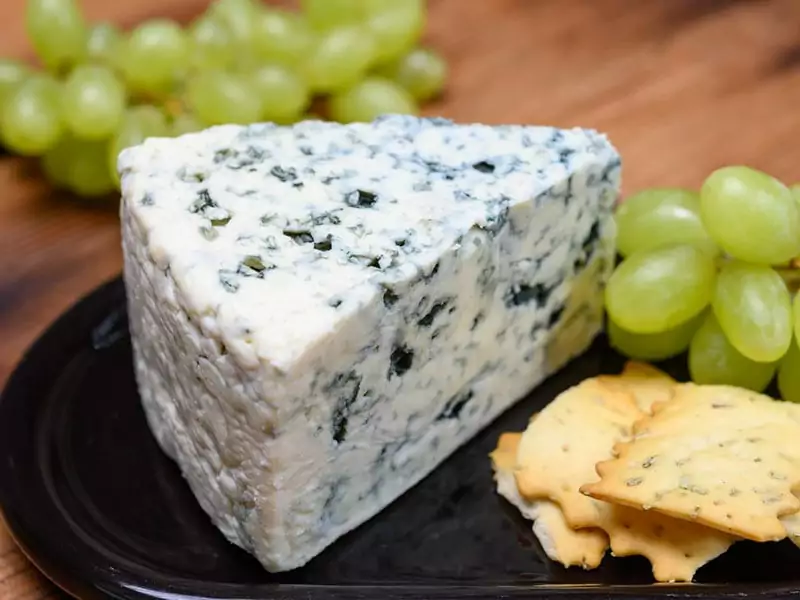
Danablu is an alluring semi-soft blue-veined cheese from Denmark. This dairy product is crafted from rich cow’s milk and homogenized cream, then aged for eight to twelve weeks.
Sporting a lovely drum or block shape, Danablu is easily recognized by its yellowish edible rind that encases a creamy, crumbly interior. With a balanced flavor profile, Danablu charms you with its mild yet distinctively salty and sharp taste.
Whether spread over crusty bread, crumbled atop your favorite salad, or served as a dessert cheese alongside fresh fruit, Danablu adds an exquisite gourmet touch to your meal.
Havarti (Interior-Ripened Cheese)
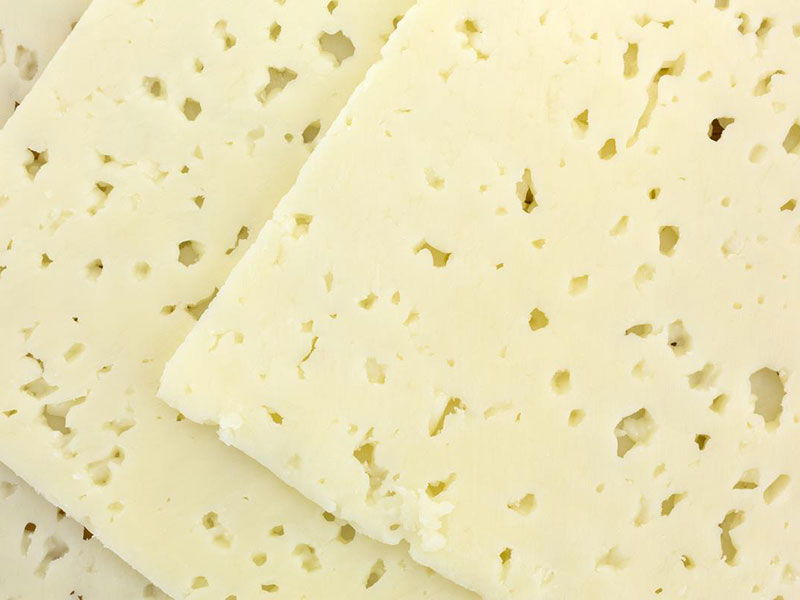
Originating from Denmark, this semi-soft interior-ripened treat is made from the freshest cow’s milk and traditionally aged for around three months. However, the aging process can prolong further, as Havarti can become more flavorful as it ages.
Its cream-to-yellow hue slightly brightens any cheeseboard, while the small “eyes” or holes add an interesting touch to its springy, smooth texture, like Swiss cheese. Havarti offers a tantalizing flavor profile, subtly sweet, buttery, and sometimes a hint of acidity.
And it’s versatile too! Whether slicing it for a picnic, grilling it for a warm sandwich, or melting it into a pasta dish, Havarti always delivers. Did I mention it has flavored variants? Also, if you can’t find Havarti, Tilsit cheese is a good substitute.
Norwegian Delicacies
Skyr (Icelandic Yogurt)
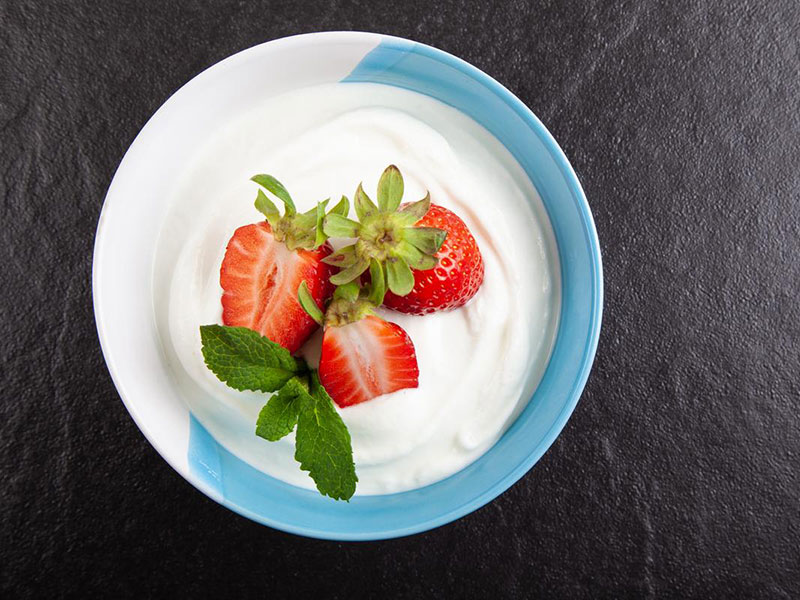
Skyr combines a velvety texture, rich and creamy flavor, and an impressive nutrient profile. Tracing its roots back to Norway, Skyr is not only only yogurt but has also become a culture in Iceland. It’s thicker and creamier since it has 3 to 4 times more milk than regular yogurt.
Skyr is a nutritional powerhouse too. This yogurt is your ally if you want to shed a few pounds, improve heart and bone health, or regulate blood sugar. [2]
But, of course, every good thing comes with a small caution. Skyr may not be a suitable choice for those who have whey or casein allergies.
Fårikål (Lamb & Cabbage Stew)
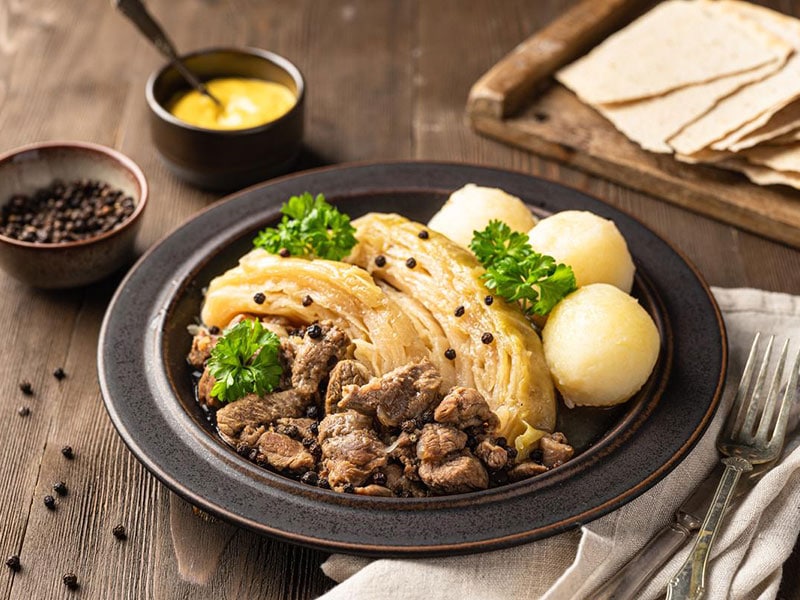
Fårikål, meaning ‘lamb in cabbage’, is a national symbol for Norway. With roots tracing back to 18th-century German cookbooks, this hearty stew entered Norwegian kitchens by the 19th century.
Fårikål is a slow-cooked mixture of lamb with bones or mutton and cabbage. As the stew simmers for hours, their flavors intermingle, resulting in a mouthwatering dish.
Originally, this stew comes with boiled potatoes and flatbread. When Norwegians have friends over, Fårikål plays the role of a ‘guest dish’, making the occasion even more special.
Moreover, every last Thursday of September, Norwegians pay tribute to this beloved dish with a Fårikål Feast Day.
Pinnekjøtt (Lamb / Mutton Ribs)
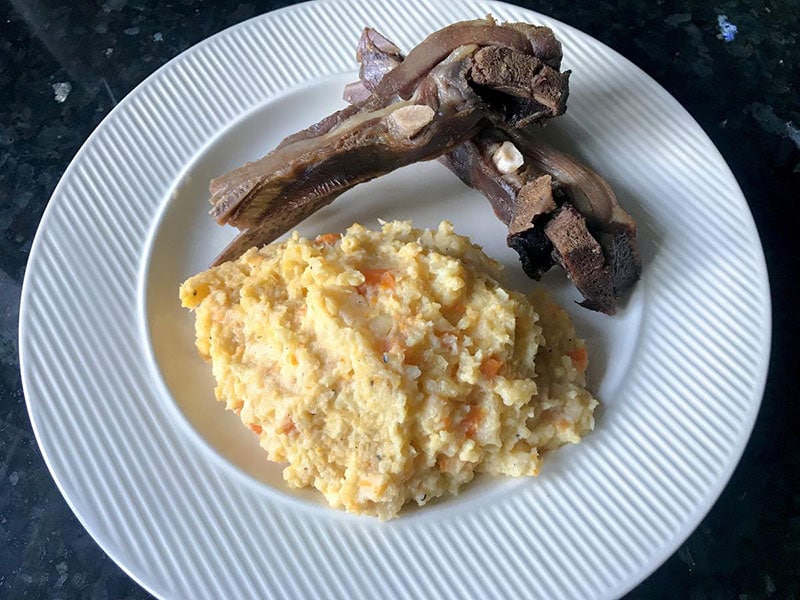
Here’s a hearty favorite from Norway, Pinnekjøtt! This dish takes center stage at Christmas dinner, particularly on the west coast, though its popularity is nationwide.
Prepared from lamb or mutton ribs, the meat undergoes a curing, drying, or smoking process for more flavor. It’s also available as a ready-made product, handy for those with less time.
A crucial step before cooking is soaking the meat in water to eliminate the salt. Now, for the sides: mashed rutabaga, also known as Swede Mash, provides a sweet counterbalance to the savory ribs.
Add a side of boiled potatoes or green beans for extra heartiness. To complete the meal, sip on some beer or akevitt, a Scandinavian distilled spirit.
Lefse (Potato Flatbread)
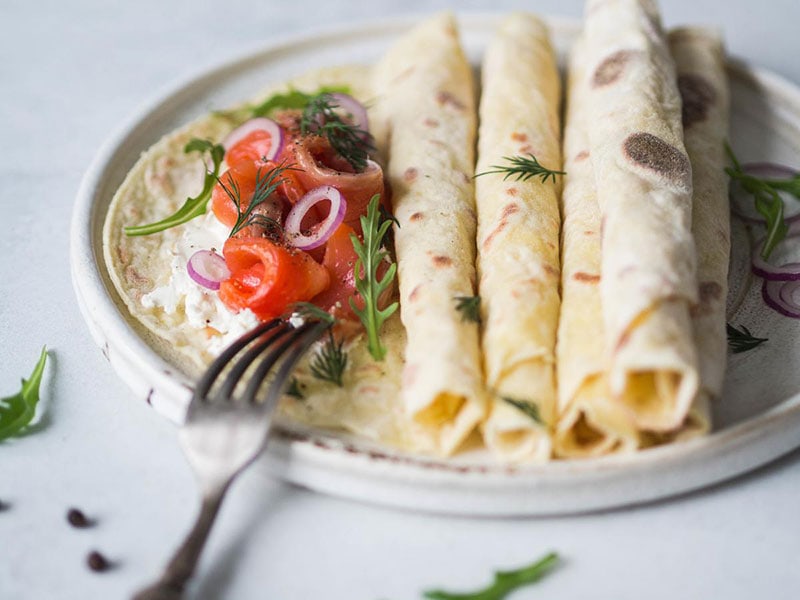
Lefse, the beloved Norwegian flatbread, may remind you of a crêpe but with more thickness. It begins with mixing flour, riced potatoes, butter, cream or lard, and milk.
Some even add a touch of sugar or cinnamon to increase the sweetness. A potato ricer and a large, flat griddle are must-have tools for this mouthwatering snack or light meal.
Whether the filling is beef, scrambled eggs, or Lutefisk, a dried white fish, Lefse can wrap them up nicely. Among all variants, Lompe is a smaller Lefse variety, while Tykklefse is a thicker version with a buttercream filling.
Medisterkaker (Pork Meatballs)
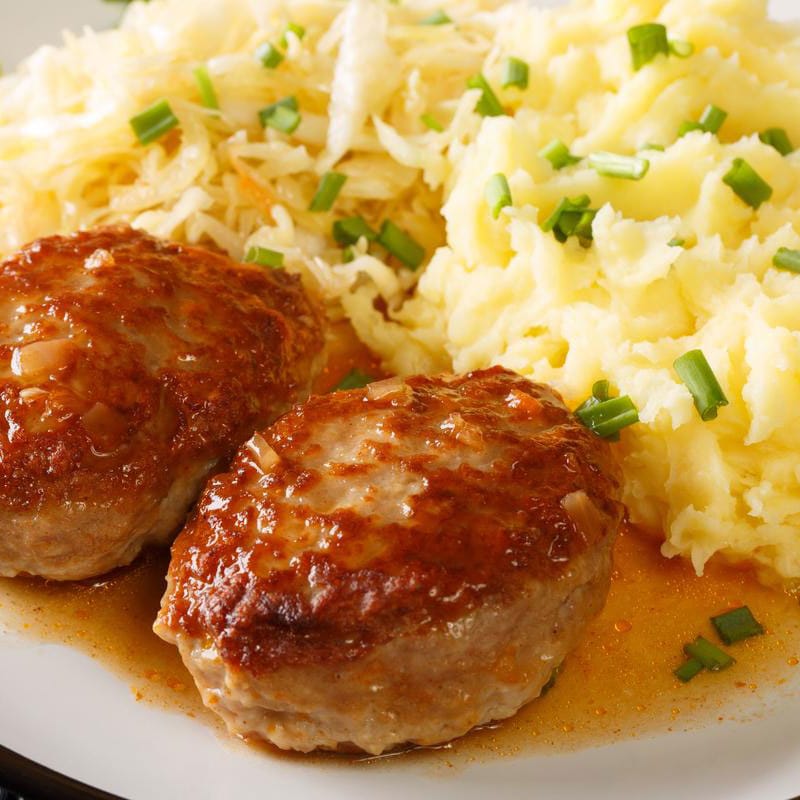
Medisterkaker is a staple in the Nordic culinary repertoire. It’s a blend of minced pork, flour, egg, milk, and other spices, like nutmeg, ginger, and black pepper.
To make Medisterkaker, mix eggs with meat, salt, and spices and gradually incorporate milk into the meaty mix. Once shaped into small patties or balls, a quick fry in butter gives them a nice brown crust.
The next step is placing them on a baking sheet in a 350°F degree oven, producing light and juicy meatballs ready to be savored. Their perfect partners are boiled or mashed potatoes, sauerkraut, lingonberry jam, and a drizzle of brown gravy.
Rød Pølser (Red Sausage)
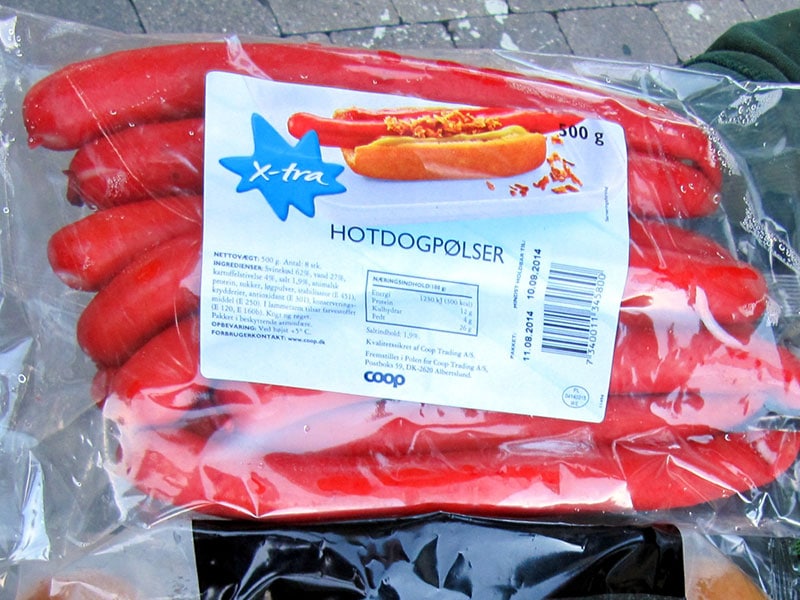
Rød Pølser is a variety of Vienna-type sausage. This boiled pork delight is a bit longer and thinner than the American hotdogs, and the signature red hue makes it easy to spot.
This quick bite pops up at hot dog stands nationwide. And making it is quite simple: Heat it in hot water and serve it in a bun. The sausage’s savory, meaty profile is tastier with different accompaniments, like cold remoulade sauce, mustard or ketchup, sliced pickles, and fried onions.
Kjøttboller (Norwegian Meatballs)
Kjøttboller is a savory comfort dish. It’s small, round meatballs made from minced meat, pork or beef, mixed with cornstarch and spices.
Unlike their larger, flattened counterparts, Kjøttkaker, these are pan-fried and served with a rich gravy. The accompanying sides of lingonberry jam, mashed potatoes, or fried onions complement the meatballs and balance the flavors.
Fiskesuppe (Norwegian Fish Soup/Chowder)
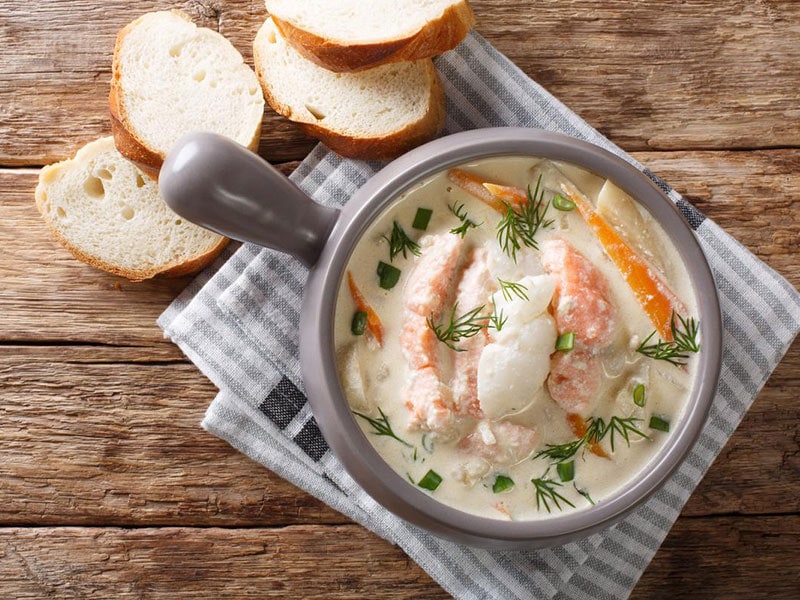
Fiskesuppe is a versatile soup using different fish, such as salmon, mahimahi, or cod. Besides fish, it contains many vegetables, including leek, bell pepper, and celery, simmering gently in a cream and olive oil mixture.
Squeeze some lemon and sprinkle some dill before serving to bring out the best ocean flavor. Serve this quick, easy-to-cook meal with a slice of bread, and you have a comforting, flavorful meal.
Brunost (Brown Cheese)
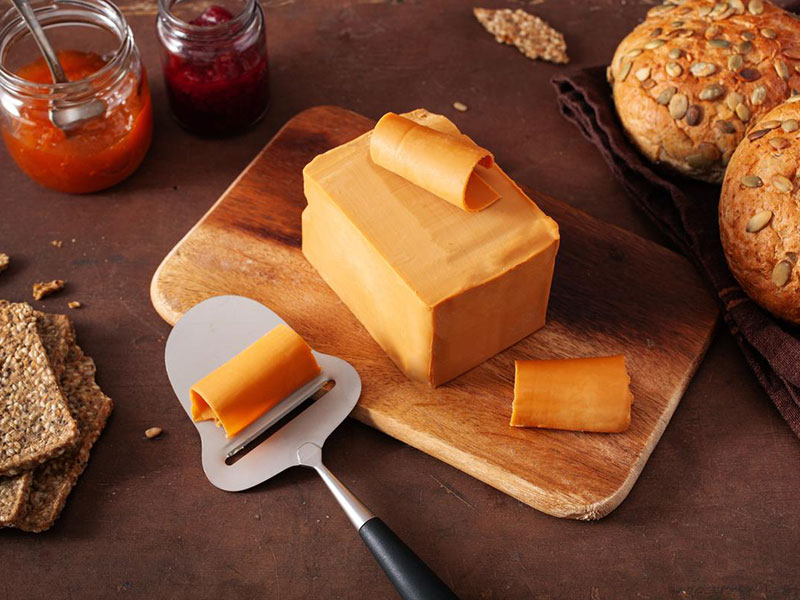
Brunost is an iconic brown cheese primarily produced in Norway. With its distinctive brown hue and fudge-like texture, it’s a mixture of whey, milk, and cream.
This combination creates a sweet, creamy, caramel-like flavor with a subtly tangy hint. Brunost adds a wonderful touch to everyday meals, whether savored atop bread, slipped into sandwiches, or melted onto waffles.
Apart from going with bread and waffles, it is an excellent ingredient in game meat sauces, enhancing the taste with its unique sweet and tangy notes.
Finnish Delicacies
Lohikeitto (Creamy Salmon Soup)
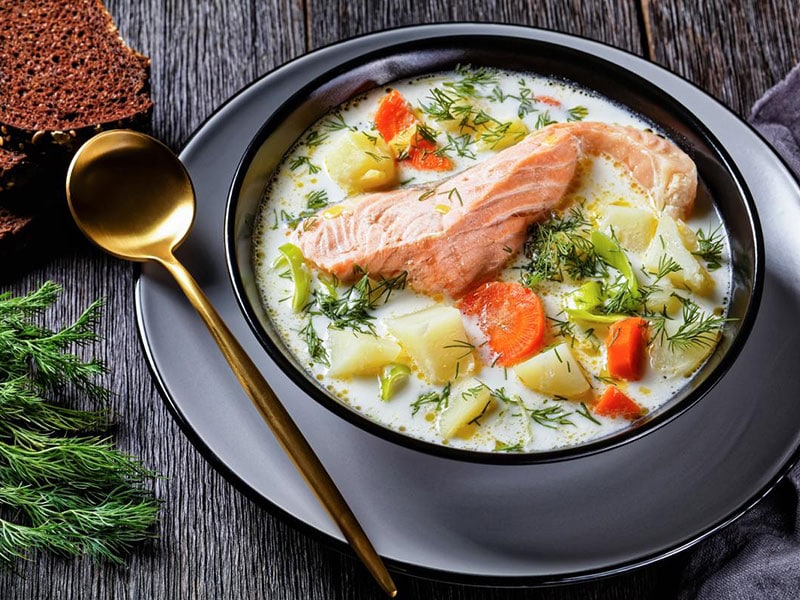
Lohikeitto is a cozy comfort food brimming with salmon filets and vegetables such as leeks, carrots, and celery.
Its richness comes from the heavy cream, although whole milk can be a lighter alternative. Served hot, Lohikeitto has a sprinkling of fresh dill on top to bind all flavors.
Karjalanpaisti (Karelian Stew)
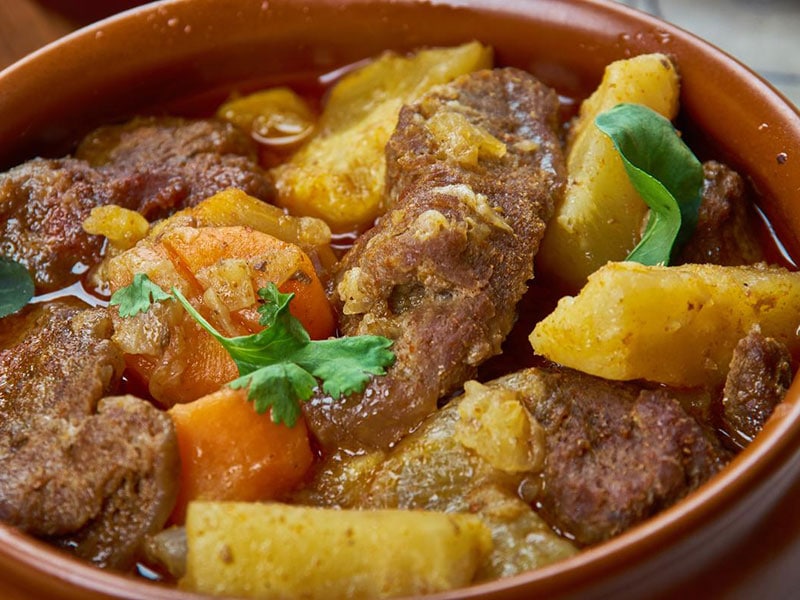
From its humble beginnings as a special occasion dish, Karjalanpaisti has certainly evolved and become a familiar fare in Finland. Since the 1940s, this satisfying dish has been one of the most popular offerings from Karelia in Finland.
It’s a hearty stew that combines various types of meats with root vegetables and carefully selected spices. The key ones I often see are allspice, peppercorns, and bay leaves.
Whether lamb, elk, beef, or pork, they all go well in this Karelian hot pot. There are also ready-made meat packages for Karjalanpaisti in Finnish supermarkets. Once everything is in the pot, wait for the ingredients to become tender.
Kaalilaatikko (Cabbage Casserole)
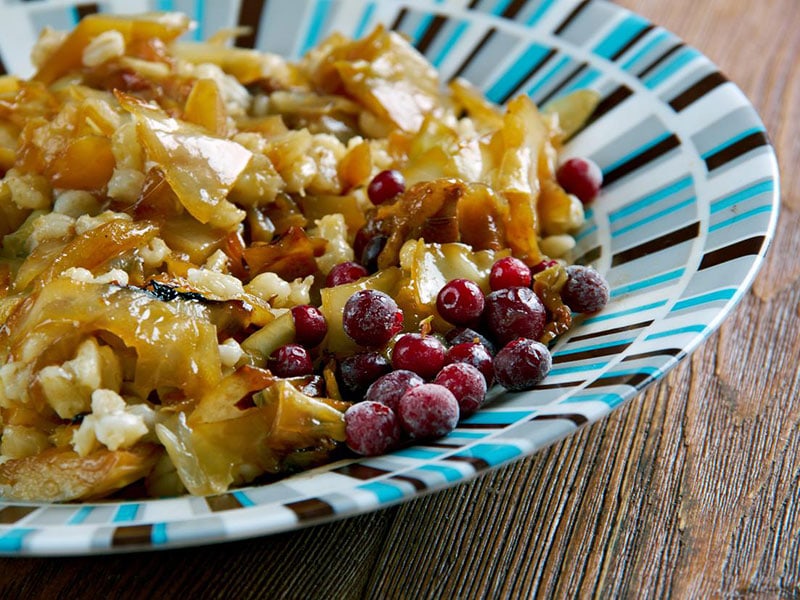
In Finland, Kaalilaatikko refers to a cabbage casserole consisting of cabbage, pearl barley or rice, and ground meat. Syrup or molasses provides sweetness, while spices such as thyme and marjoram bring a hint of warmth.
For a nutritious boost, toss in other vegetables like potatoes or carrots. The dish is tastiest when served with a tangy lingonberry or cranberry jam, balancing the casserole’s savory richness.
Mämmi (Finnish Rye Pudding)
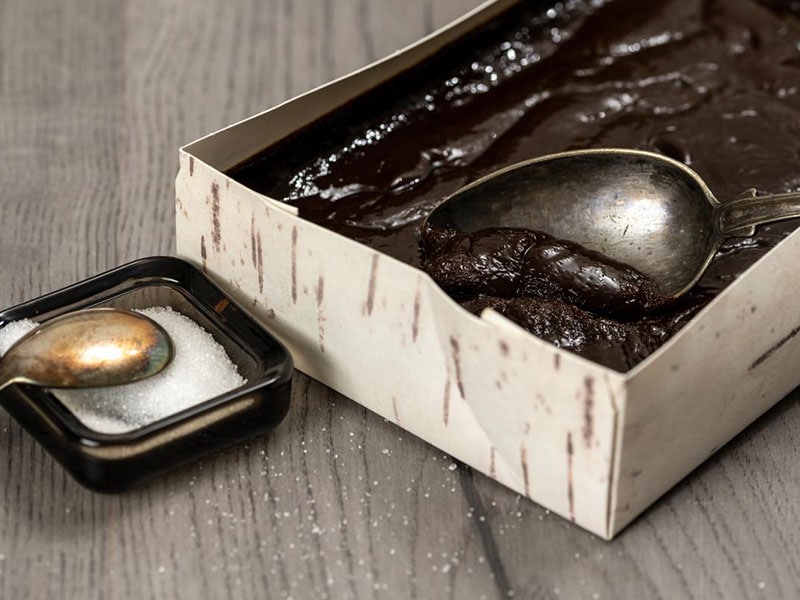
Mämmi hails from Finland and is primarily enjoyed cold during Easter and Lent. This time-honored recipe combines rye flour, salt, water, ground malted rye, and, optionally, a hint of zesty orange.
The dessert gains its sweet, bready flavor through a slow, natural sweetening process before baking. Although commercial variants often include dark molasses, newer versions are more creative, introducing elements like vanilla and chocolate.
With a jet-black hue and pudding-like softness, Mämmi’s appearance is as memorable as its taste. White whipped cream, milk, or vanilla sauce is the ideal accompaniment, creating an eye-catching color contrast.
Mustikkapiirakka (Finnish Blueberry Pie)
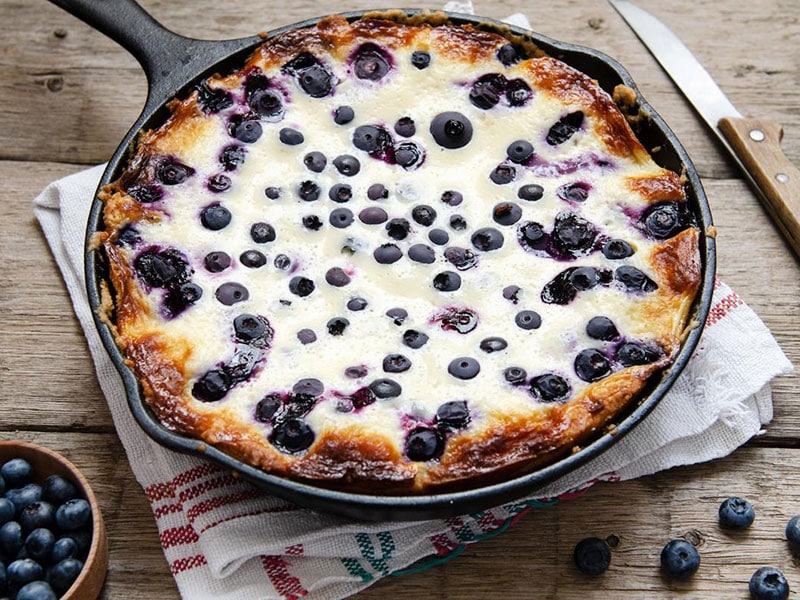
Mustikkapiirakka holds a special place in Finnish culinary traditions. It stands out among other sweets thanks to two key elements.
First, the dough combines rye flour with all-purpose flour, resulting in an excellent texture. Then, the filling features bilberries, a nutritious European to regular blueberries, adding a touch of uniqueness to this beloved pie.
The result is a pie with a crumbly crust encasing sweetness and the tart flavors of berries and sour cream.
Rieska (Soft Flatbread)
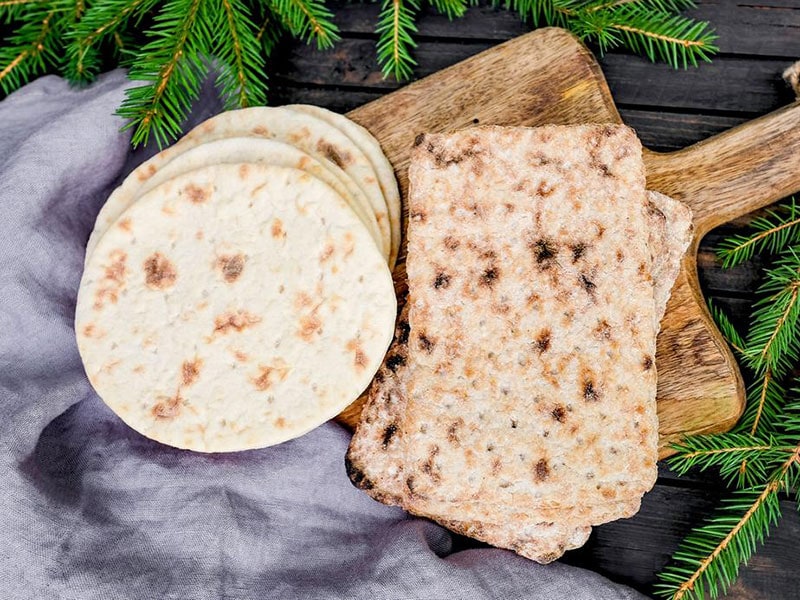
Rieska holds a warm spot in the hearts of the Finnish people as one of Finland’s most cherished bread variants. Simplicity is key to this bread, with humble ingredients like rye, oat, or barley flour, water, and salt forming its base.
Different corners of Finland bring their own unique twists, ranging from thin, crisp flatbreads to thicker, heartier versions. Unleavened is the standard, but sometimes a little yeast or baking soda enters the mix.
The flavor is subtly sweet and nutty, with some recipes opting for milk or buttermilk to further enrich the taste. Whether baked in an oven or sizzled in a pan like a pancake, butter and milk make the perfect companions to Rieska.
Icelandic Delicacies
Hákarl (Icelandic Fermented Shark)
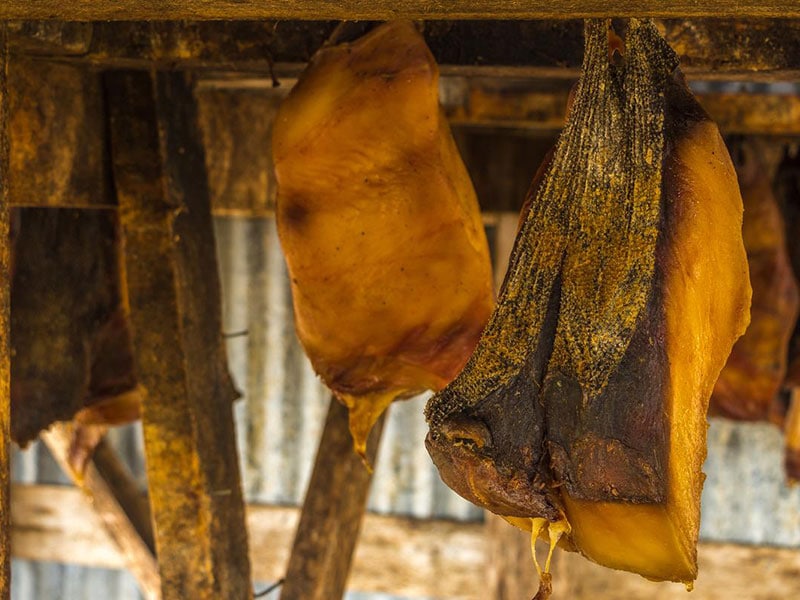
Hákarl, a national dish of Iceland, may seem a bit unconventional. This unique delicacy, revered by locals and tourists alike, is made from Greenland sharks.
The raw fish is toxic, so it undergoes a rigorous fermentation process for several weeks, followed by a drying period of 4 to 6 months.
The result isn’t for those with a weak heart: it’s super fishy, filled with the heady ammonia aroma. And its taste may remind you of strong cheese or even cleaning products.
Hákarl’s distinctive profile makes it a highlight at þorrablót, a midwinter festival in Iceland. And if you’re ever in an Icelandic store or supermarket, you’ll likely spot this staple on the shelves.
For the daring, pairing Hákarl with a strong spirit like vodka can complement the dish’s strong character.
Svið (Singed Sheep Head)
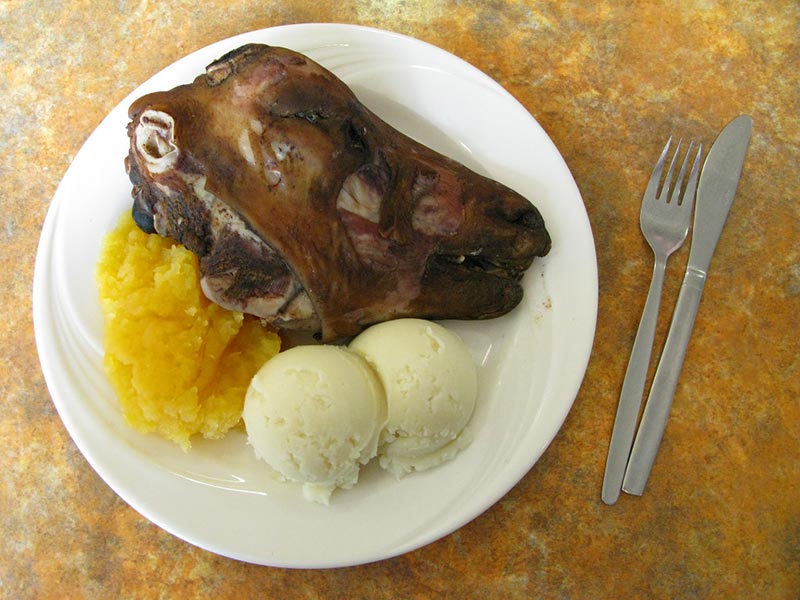
Svið, an Icelandic dish known for its unique appearance, harks back to times when the country’s challenging environment necessitated the use of every part of an animal. This dish utilizes a sheep’s head as its primary ingredient.
Preparation involves a multi-step process: the head is halved, its fur singed off, and the brain removed before it is either boiled or roasted. Svið can be savored hot or cold, and is frequently paired with accompaniments like cooked potatoes, rutabagas, and rhubarb jelly.
Most of the meat is located in the tender cheeks, a sought-after morsel for many. But for true gourmands, the eyes of the sheep truly set this dish apart.
Kjötsúpa (Lamb Soup)
Kjötsúpa, a traditional Icelandic soup, is all about the comforting combination of lamb on the bone, assorted vegetables including carrots, rutabagas, potatoes, leeks, onions, and a bit of oatmeal, added for thickness.
The soup relies on the inherent flavors of its ingredients, using only salt and pepper for seasoning, yet yields a hearty and fulfilling dish. It’s so rich that it pairs wonderfully with neutral-tasting sides like mashed potatoes or cauliflower rice.
Kjötsúpa was once served on Sundays or at Christmas, but now it’s a beloved regular meal. Moreover, it stores well for later use, making it a practical choice. So, when the cold Icelandic winter sets in, you may need a bowl of Kjötsúpa to warm up.
Baltic Delicacies
Verivorst (Estonian Blood Sausage)
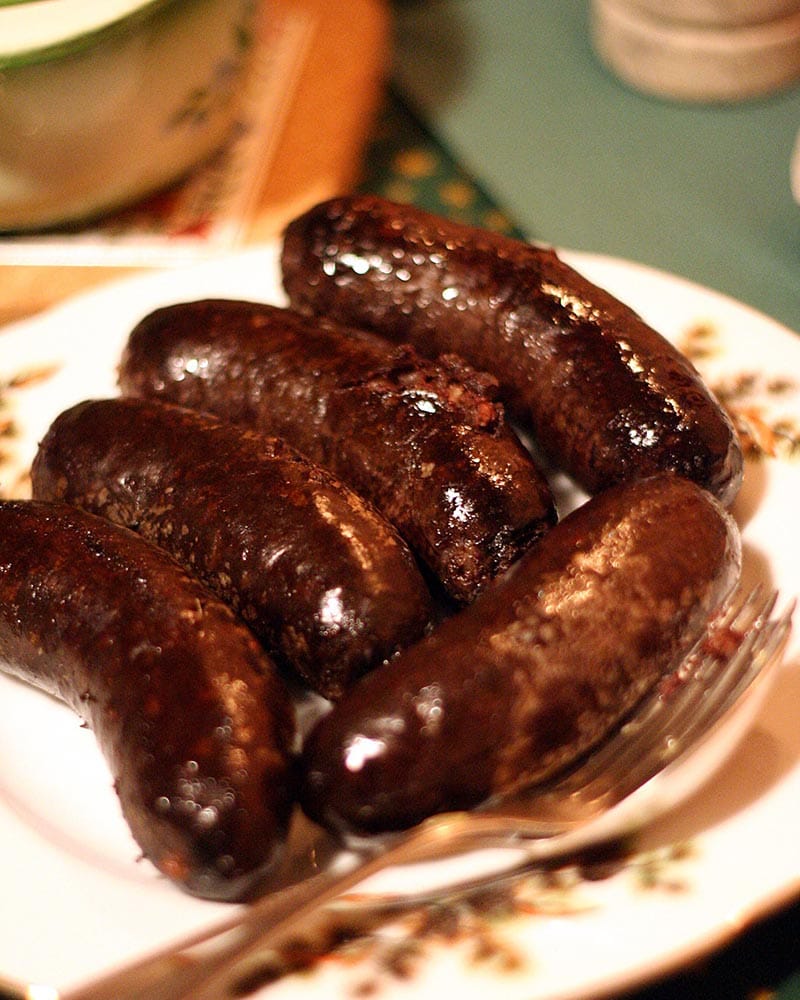
Verivorst is a blend of pork, pork blood, barley, onions, and spices, all neatly bundled in pork intestines. This flavorful assembly shares similarities with Korean Soondae or British black puddings.
Verivorst is no everyday affair; it steps into the spotlight as a winter delicacy, emphasizing the Christmas season. The sizes of these sausages are as diverse as how they can be cooked: baked, roasted, or pan-fried.
Verivorst is ideal for accompanying sour cream, potatoes, sauerkraut, or cranberry preserves.
Sklandrausis (Latvian Vegetable-Filled Pie)
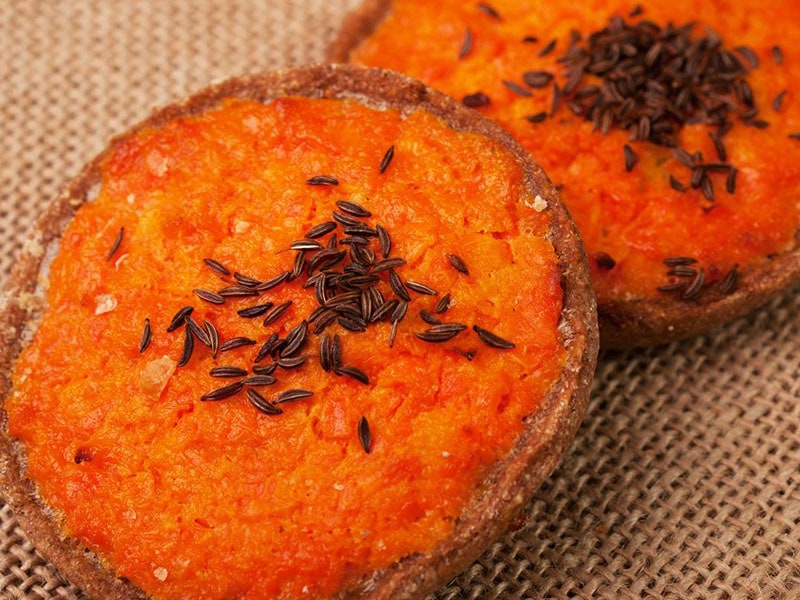
Sklandrausis has its roots in the historical region of Livonia. It’s a lovely dessert with rye dough and rich, hearty vegetable-based fillings.
The two-part filling is a fusion of eggs, butter, sour cream, and caraway seeds, with one layer housing mashed carrots and the other embracing mashed potatoes. Preparing the Sklandrausis involves cutting the dough into multiple rounds or cases, each receiving a hearty stuffing of the fillings.
Sklandrausis offers a sweet taste, perfectly accented by the woody undertones of carrots. The locals serve the flavor with a dollop of sour cream, honey, milk, or tea to complete the flavor.
Adding to its culinary prestige, Sklandrausis earned the Traditional Specialities Guaranteed (TSG) status from the EU in 2013.
Cepelinai (Lithuanian Potato Dumpling)
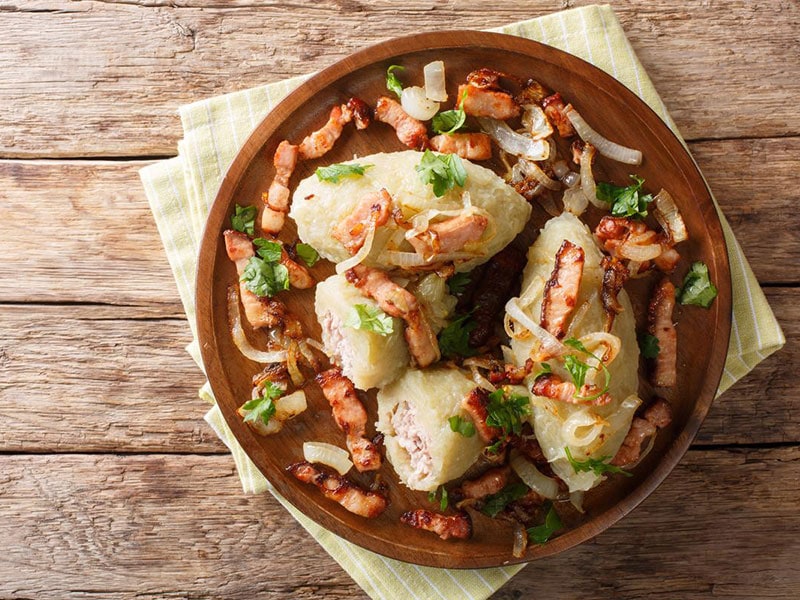
Cepelinai is Lithuania’s national dish. Despite its fairly recent introduction in the 1930s, this dish became famous post-WWII. Its exterior is a cozy shell of grated potatoes, embracing a hearty stuffing of ground meat, mushrooms, and dry curd cheese.
Cepelinai’s considerable size makes it a satisfying meal, suitable for those with a hearty appetite. Even the flavors are super rich, as dumplings are lavished with bacon gravy and sour cream.
Its name pays homage to the ‘Zeppelin,’ an airship that shares a striking similarity with the shape of the dumpling.
Maizes Zupa (Rye Bread Soup)
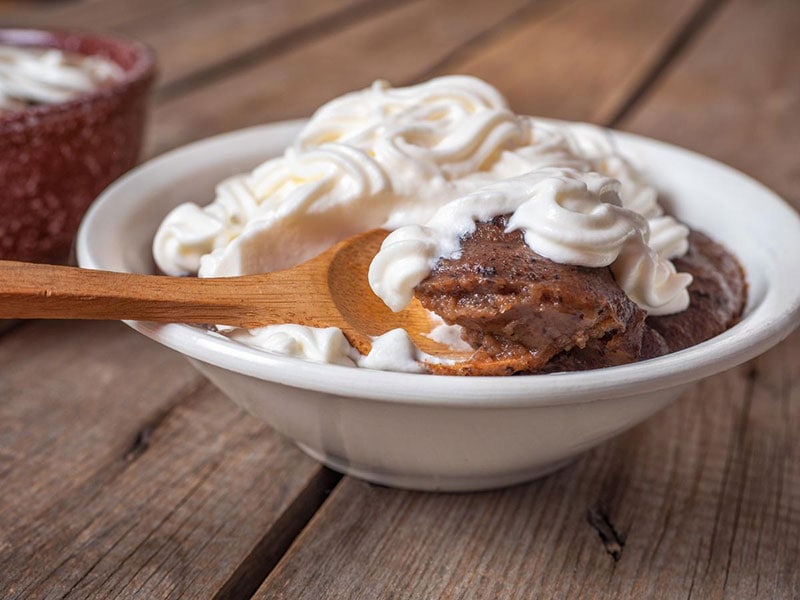
Maizes Zupa is a simple yet charming Latvian dessert. It’s made of leftover rye bread, slowly cooked with dried fruits, cranberry juice, sugar, and spices.
This cold soup, brimming with sweet notes and a tangy kick, gets crowned with whipped cream. Its soft texture is similar to a bread pudding, offering a comforting end to your meal.
Other Delights
Smørrebrød (Open-Faced Rye Bread Sandwich)
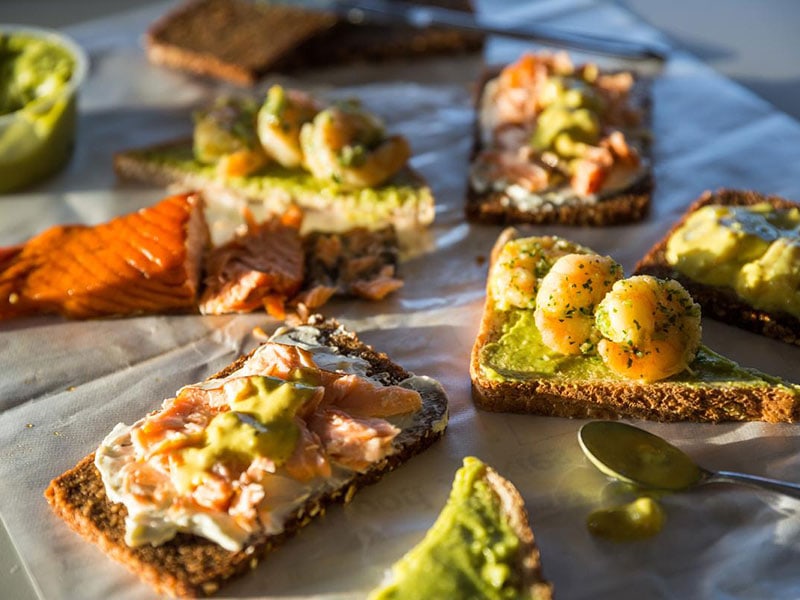
Smørrebrød, which translates to “butter and bread,” is a flavorful Scandinavian invention that traces back to the 19th-century industrial age.
It begins with a piece of sourdough rye bread, generously buttered, then adorned with various toppings. The options are boundless, from pickled herrings – the most popular choice – to cheese, smoked fish, cold cuts, and spreads.
Smørrebrød started as a practical way for workers to carry leftover dinner to work. Now, it takes the culinary center stage as a versatile appetizer for breakfast or lunch. Unlike other sandwiches, it is often eaten with a knife and a fork.
Kransekage/Kransekake (Wreath Cake)

Kransekage, also called Kransekake or Tårnkake, is a popular Scandinavian confection. It’s the centerpiece at special occasions, from Christmas to weddings and national day celebrations.
This unique cake is constructed from 18 concentric almond-rich rings that scale down in size as they ascend, creating a captivating cone shape. The secret adhesive holding these nutty layers together? None other than sweet, white icing.
This unique cake imparts a rich, nutty flavor, making it not just a feast for the eyes but also a delectable indulgence for the taste buds.
Lutefisk (Dried Fish Cured In Lye)
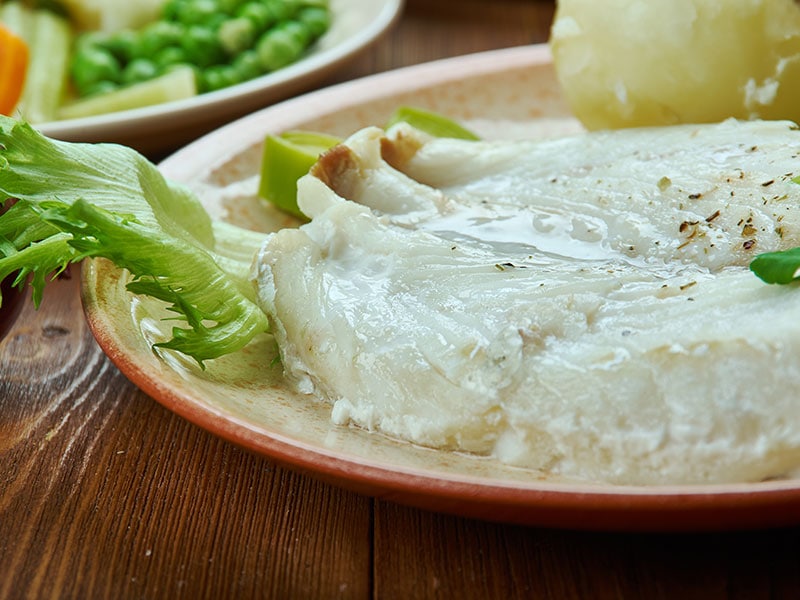
One of the most fascinating things about my culinary explorations is coming across dishes that have deeply rooted histories, like Lutefisk.
With origins tracing back to the times of the Vikings, this Norwegian or Swedish creation starts with whitefish like cod or ling, dried until it’s tough as leather and soaked in lye. This process transforms the fish into a unique gelatinous texture.
Although I’ve heard about the nutritional benefits of Lutefisk, its unique flavor piques my interest more. Its taste is mildly fishy with a subtle alkaline aftertaste that some describe as akin to soap or ammonia. It can be off-putting for some, while others find it endearing.
While Lutefisk is dwindling in popularity in its homeland, it’s gained quite a following in the United States. In fact, Madison, Minnesota, proudly calls itself the “Lutefisk capital of the USA.” [3]
Bidos (Sami Reindeer Stew)
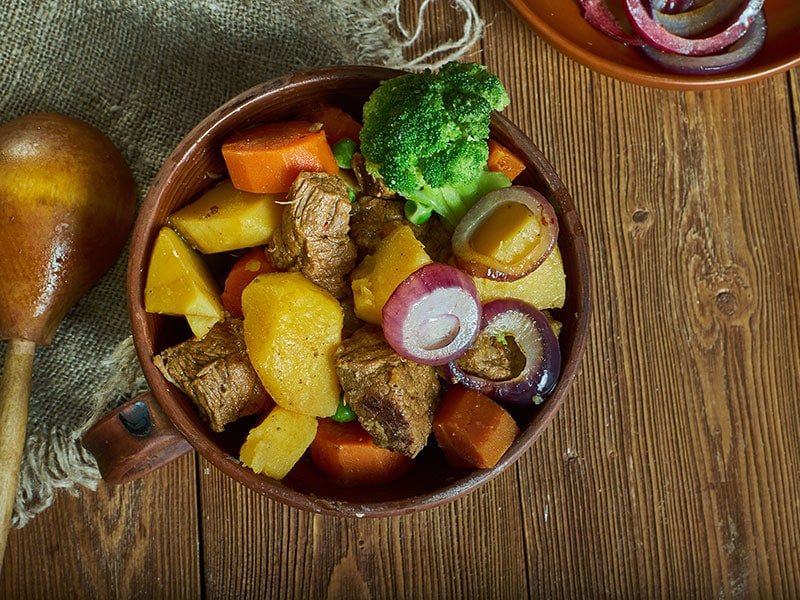
Bidos beautifully encapsulates the spirit of Sápmi, a region where reindeer herding is a way of life. The dish is a blend of lean and rich reindeer meat, even the heart, with vegetables like carrots, onions, and potatoes.
Each bite of this minimally seasoned stew is a wonderful revelation of flavor, its richness a testament to its significance in celebrations, including weddings and special events.
Gravlax (Cured Salmon)
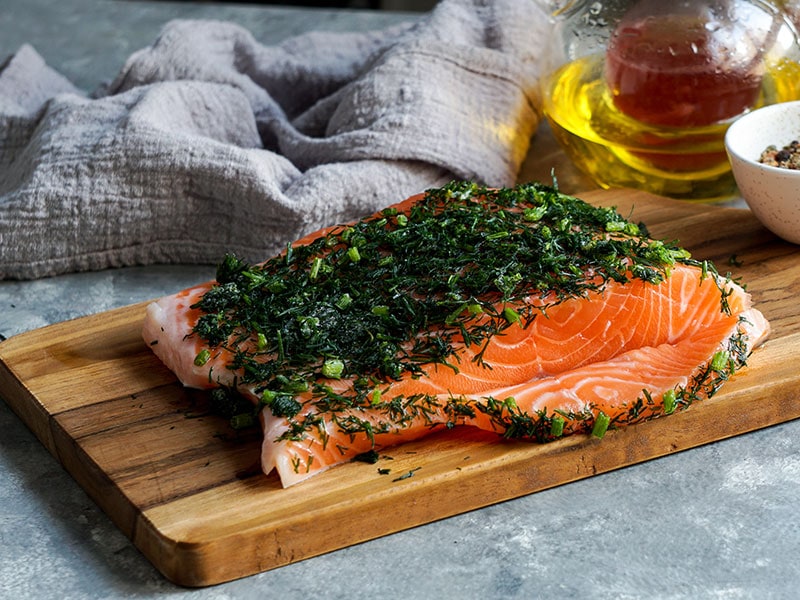
Gravlax, a Nordic gem, shines in its simplicity and rich flavors. As an hors d’oeuvre, thin slices are spread over a piece of toast or complemented by crème fraîche or pickled cucumbers.
The curing process requires salt, sugar, and herbs, including dill, horseradish, coriander, or spruce twigs. The name “Gravlax” translates to “buried salmon,” nodding to how the locals originally buried it underground during curing.
Today, the refrigerator steps in for this job, but remember to weigh the fish down with a heavy tool like a pan to achieve the authentic texture. Regarding taste, Gravlax is more exotic and robust than smoked salmon.
Moreover, it’s a powerhouse of nutrition, offering proteins, B vitamins, and Omega-3 fatty acids.
Meatballs
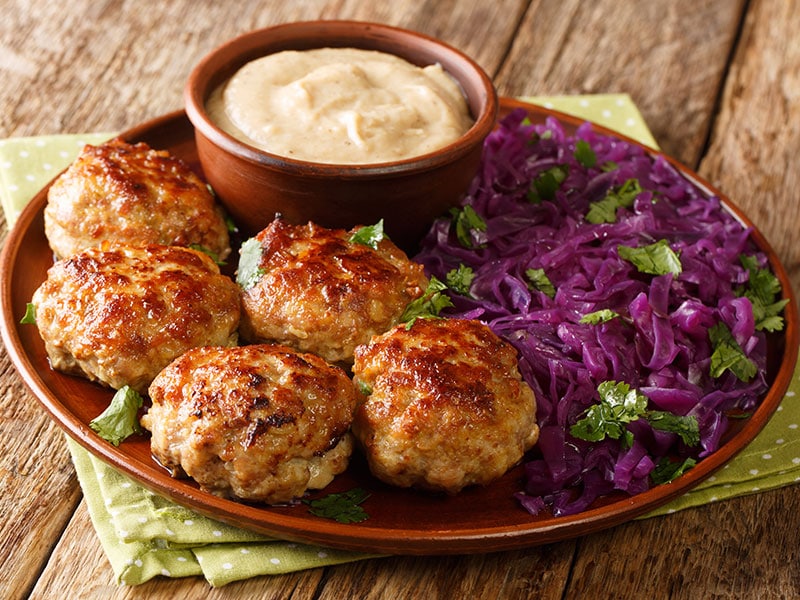
Northern European cuisine has a deep affection for meatballs, with each region adding a unique spin. For example, Denmark has Frikadeller, crispy fried pork meatballs. Boller I Karry, another Danish favorite, pairs meatballs with an exotic curry sauce and rice.
Jumping to Norway, Kjøttboller reigns. Larger than their counterparts, these meatballs are meticulously crafted with pork or beef and aromatic spices.
Meanwhile, Finland is known for Lihapullat. This staple features ground pork and beef. However, variations include ground reindeer or elk meat, making for an exciting change. For Sweden, locals have Köttbullar.
These mouthwatering meatballs are a blend of ground meat, onions, breadcrumbs, and sometimes a dash of milk. Pair them with mashed or boiled potatoes, hearty gravy or brown sauce, or lingonberry jam; they’re a meal in themselves.
FAQs
Farewell To The European Feast
I hope this exploration of traditional Northern European dishes has ignited your taste buds and piqued your curiosity. From the hearty stews to the delicate pastries, these delicious dishes offer a rich tapestry of flavors and cultural heritage.
Share your favorite Northern European dish in the comments below and invite your friends to join the conversation. Let’s celebrate the diverse and delicious world of food together. Remember to like, share the post, and keep the conversation alive. Bon appétit!
References
- (No date) Academic.oup.com.
- Ajmera, R. (2017) Why skyr is nutritious and super healthy, Healthline.
- Magazine, S. (2011) Scandinavians’ strange holiday lutefisk tradition, Smithsonian.com.

